Ten
PEOPLE, PLACES
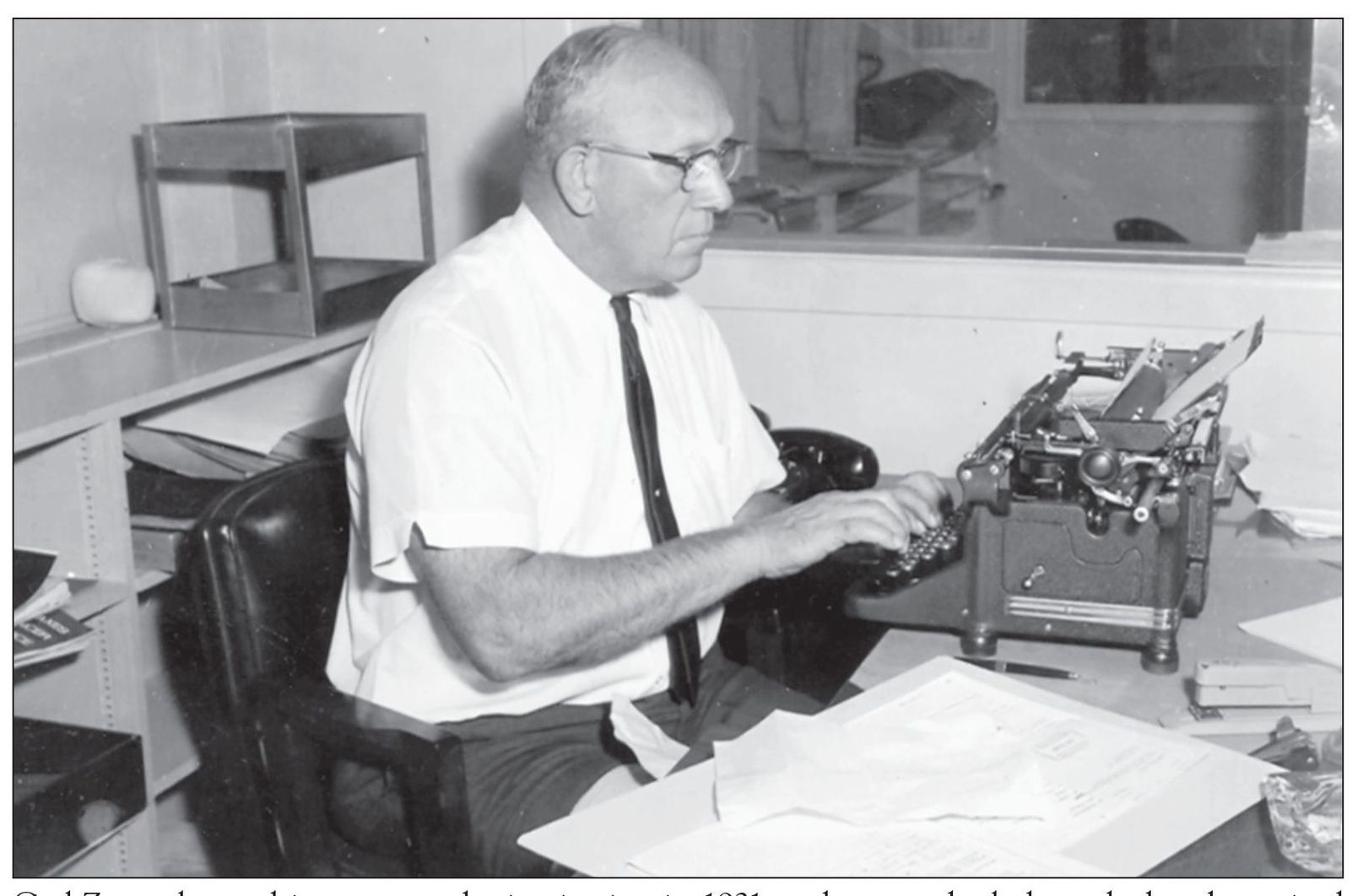
Carl Zarter began his career at the institution in 1931 as the records clerk, and when he retired 39 years later in 1970, he was responsible for receiving over 70,000 inmates. During his career, Zarter was allowed to carry a camera and many of his photographs appear in this book through the kindness his family. After his retirement, Zarter worked writing Federal Bureau of Prison standards in habeas corpus cases. (Courtesy Chuck Zarter.)
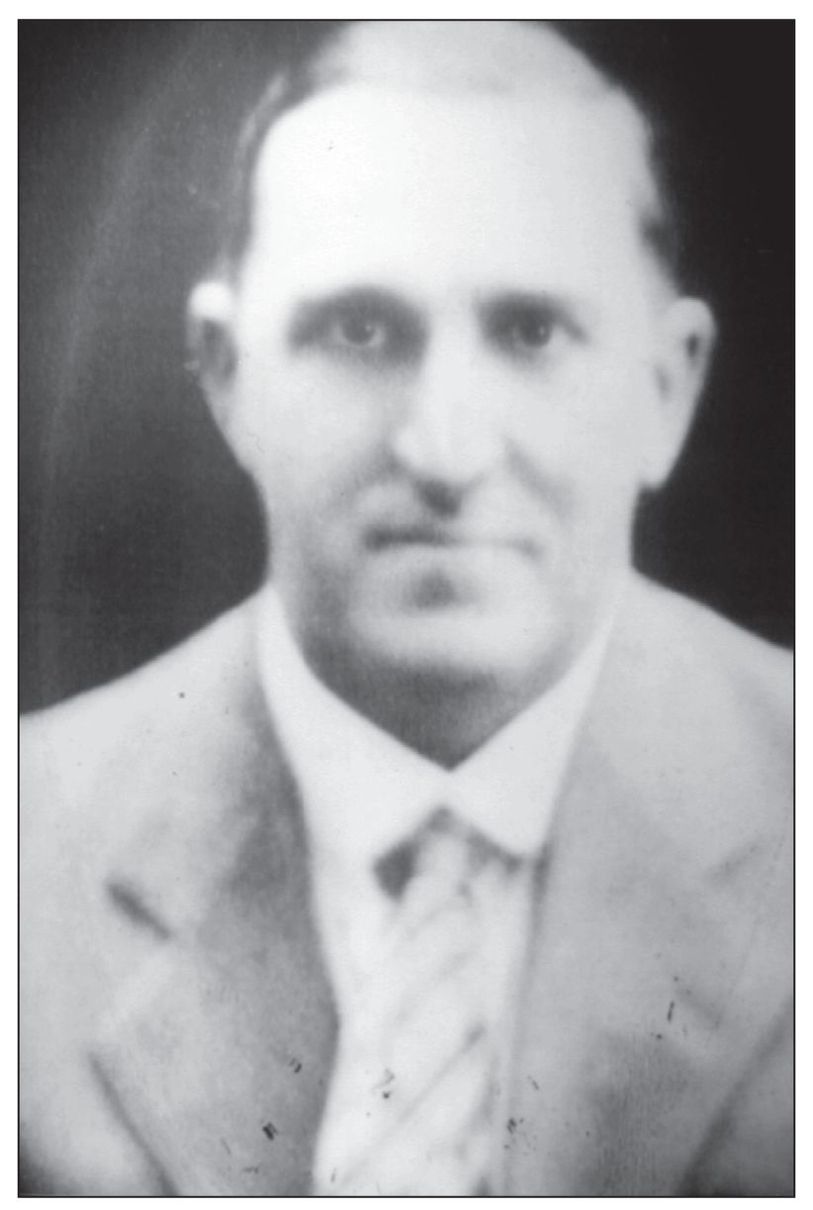
Robert G. Warnke was a Spanish-American War veteran and served with Theodore Roosevelt’s Rough Riders. Warnke was appointed to the position of laundry foreman in 1921. On the morning of June 20, 1929, shortly after arriving at work, the foreman was busy inspecting clothes when inmate Carl Panzram took up an iron bar. As Warnke was bent over, Panzram struck him in the head. Once on the ground, Panzram stood over him and continued the assault. Panzram was convicted of murder and was executed. (Courtesy Warnke family.)
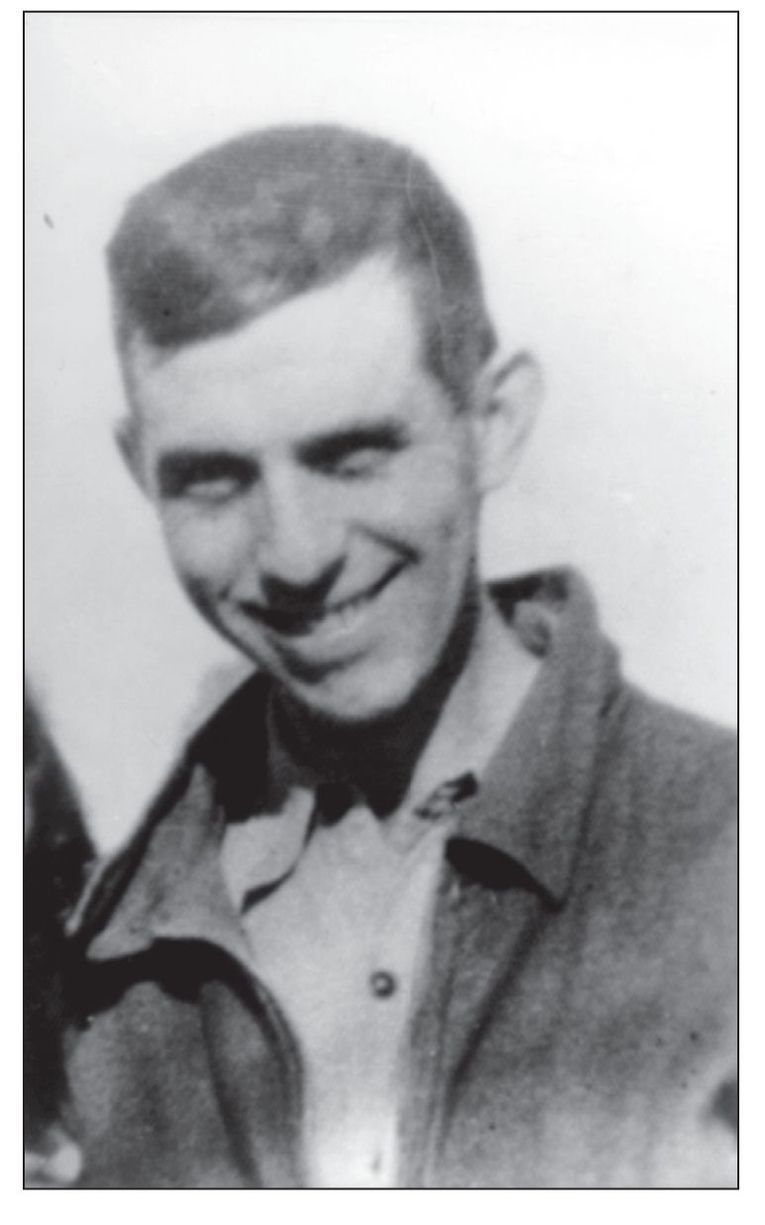
Slaughterhouse foreman Elmer Bauder reported for duty on October 14, 1960, and instructed his crew about the day’s work. Bauder turned and walked into his office, and as he turned on the light, the building exploded. Witnesses said the explosion lifted the roof straight up and blew out the walls. Bauder and two inmates were killed, and five others were injured. It was Bauder’s 46th birthday. (Courtesy Joe Bauder.)
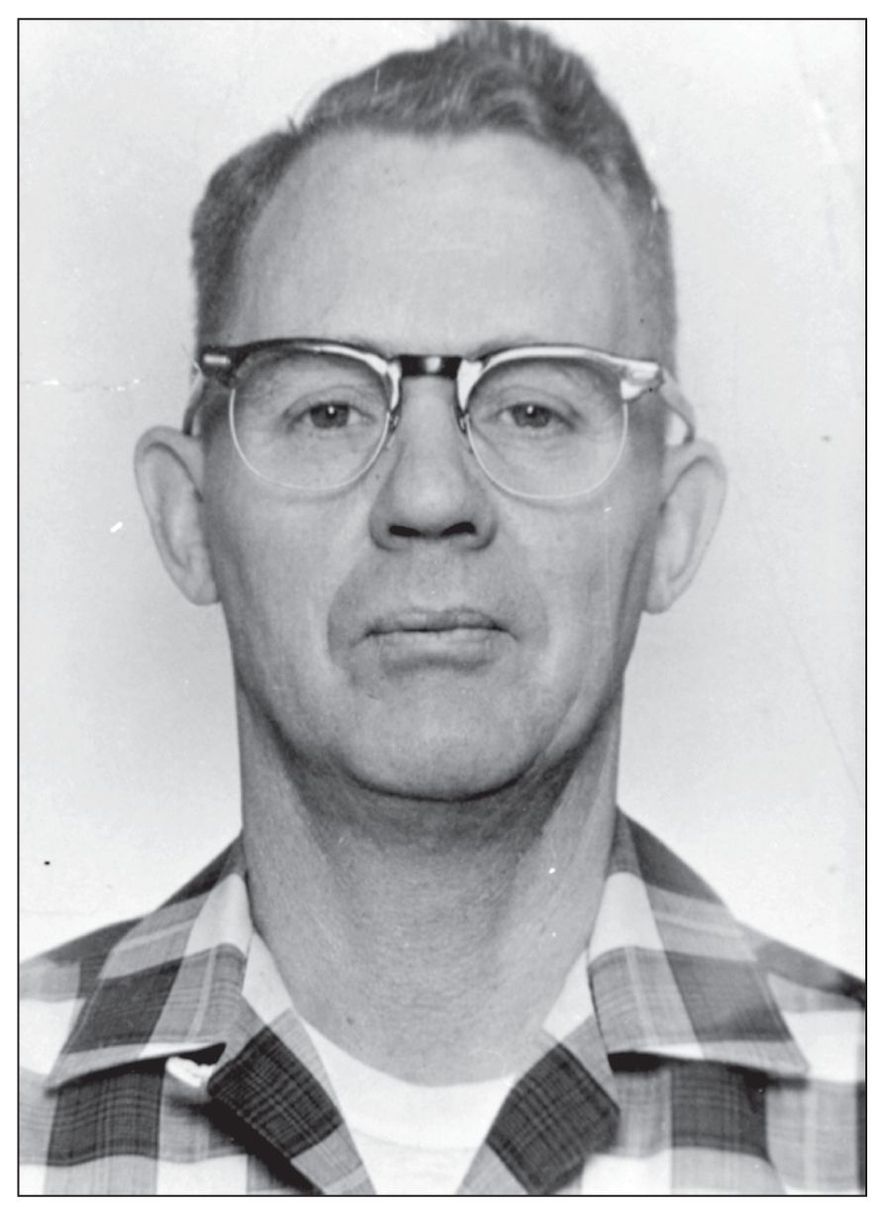
William Berry began his career at Leavenworth after a long and distinguished military career. Berry was working as cook supervisor on the afternoon of August 19, 1972. As he supervised the cooking of the evening meal, an inmate approached and advised Berry that the pilot light had gone out on the oven. As he was attempting to relight the oven, an explosion occurred. Berry succumbed to his injuries, leaving behind a wife and daughter. (Courtesy Cheryl Mellavan.)
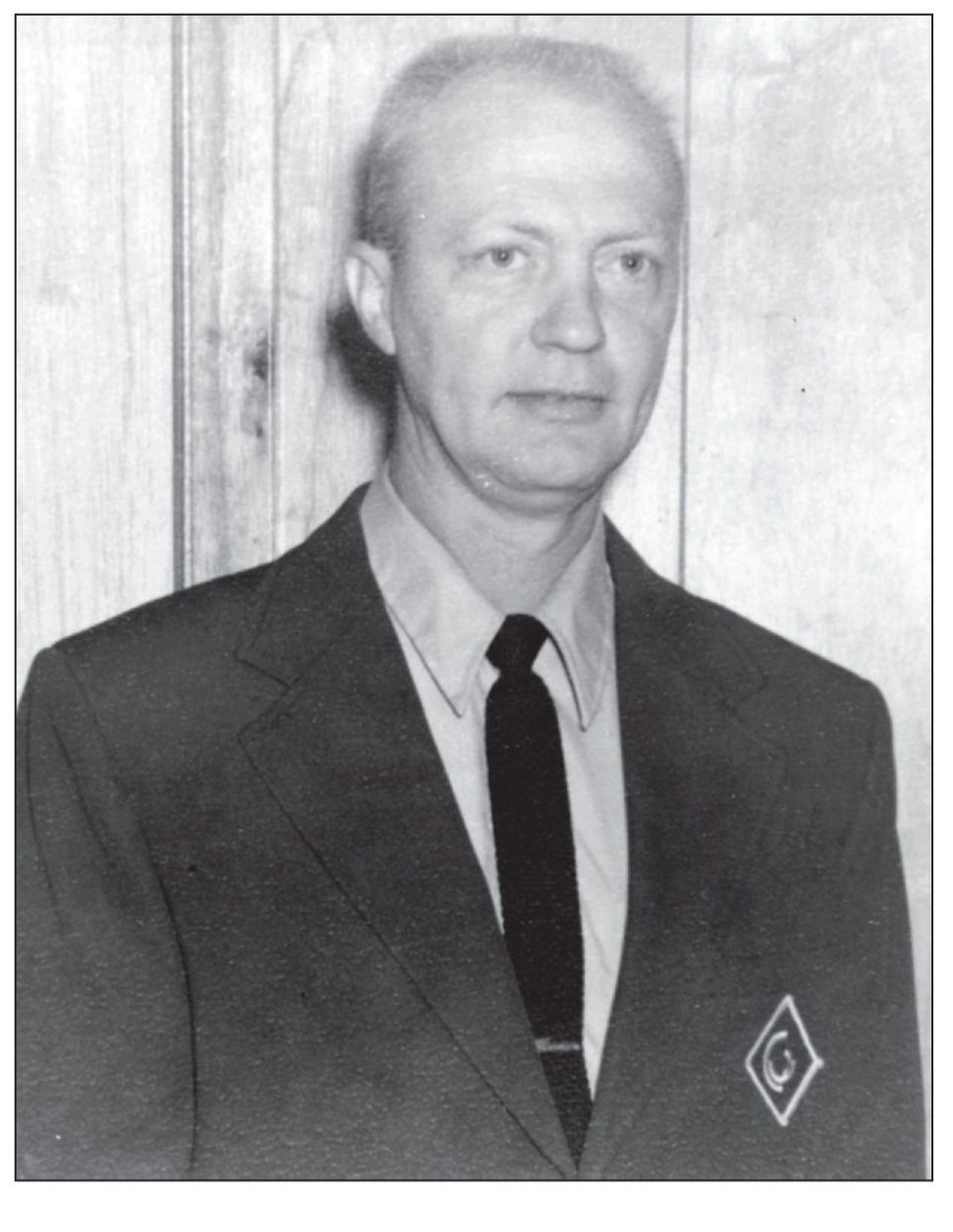
John F. (Jack) Cogan began his career as a correctional officer and had also worked as a correctional counselor. In December 1978, Cogan received a promotion to farm supervisor. On January 31, 1979, Cogan and his crew were working on a truck in the garage. An inmate who was under the truck sparked a blowtorch, and an explosion ripped through the building. Cogan and two inmates were killed instantly. (Courtesy the Cogan family.)
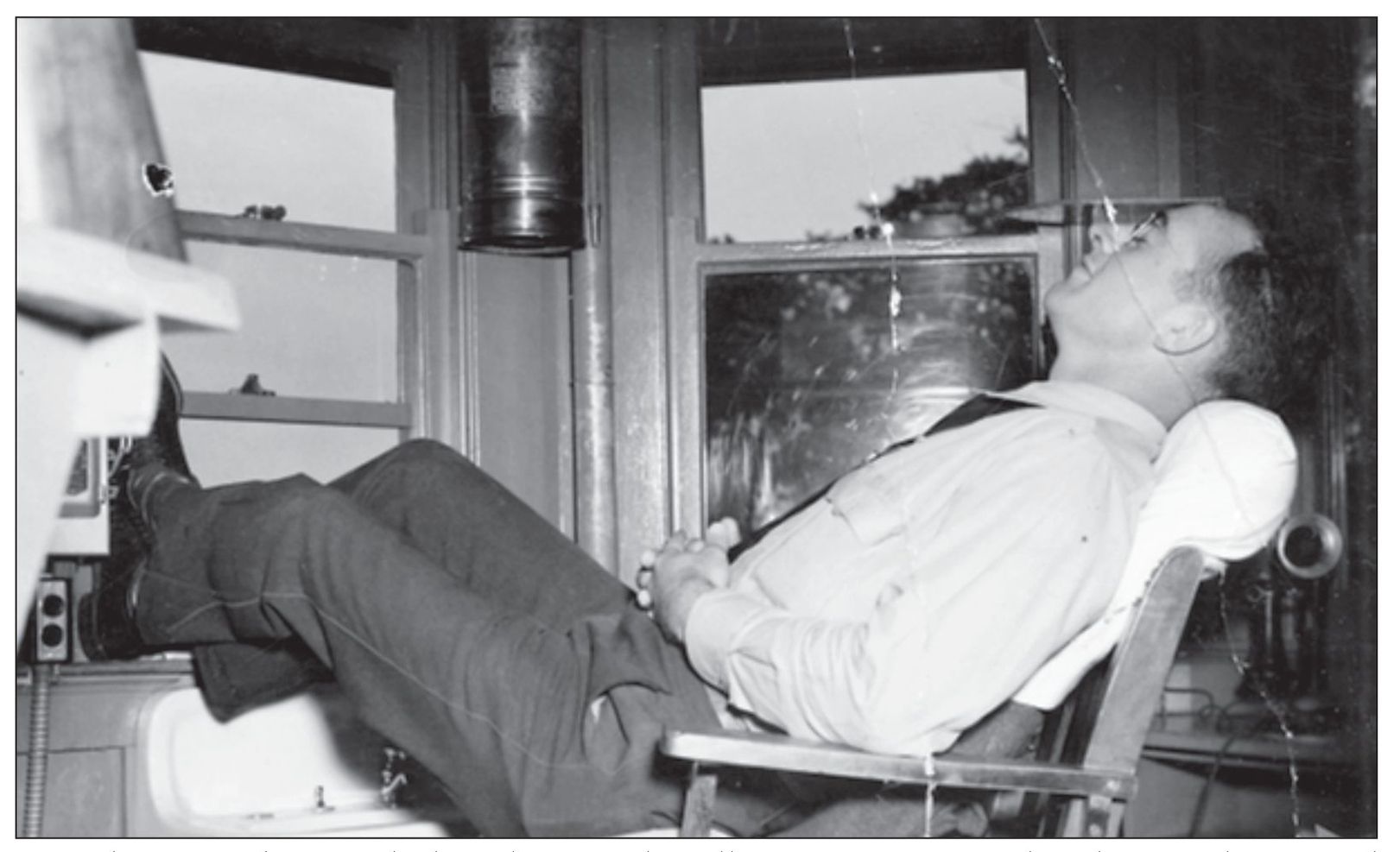
Over the years, photographs have been used in all types of training. This photograph was used to demonstrate what not to do while on duty in a tower. (Author’s collection.)
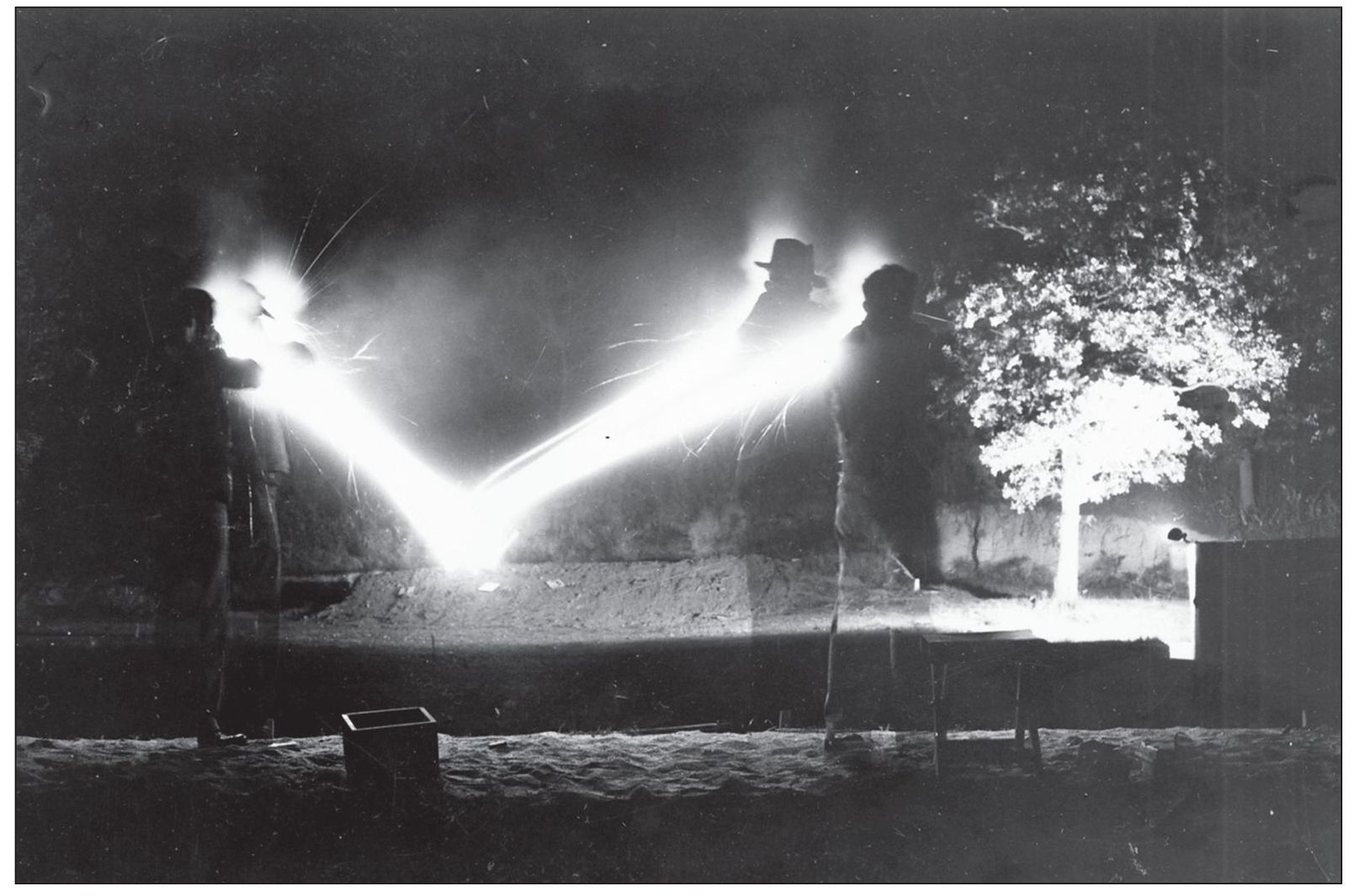
During the Central Division Firearms Competition, held at Leavenworth on October 13, 1949, staff witnessed a demonstration of the Thompson .45 caliber machine gun with tracers. (Courtesy National Archives and Records Administration.)
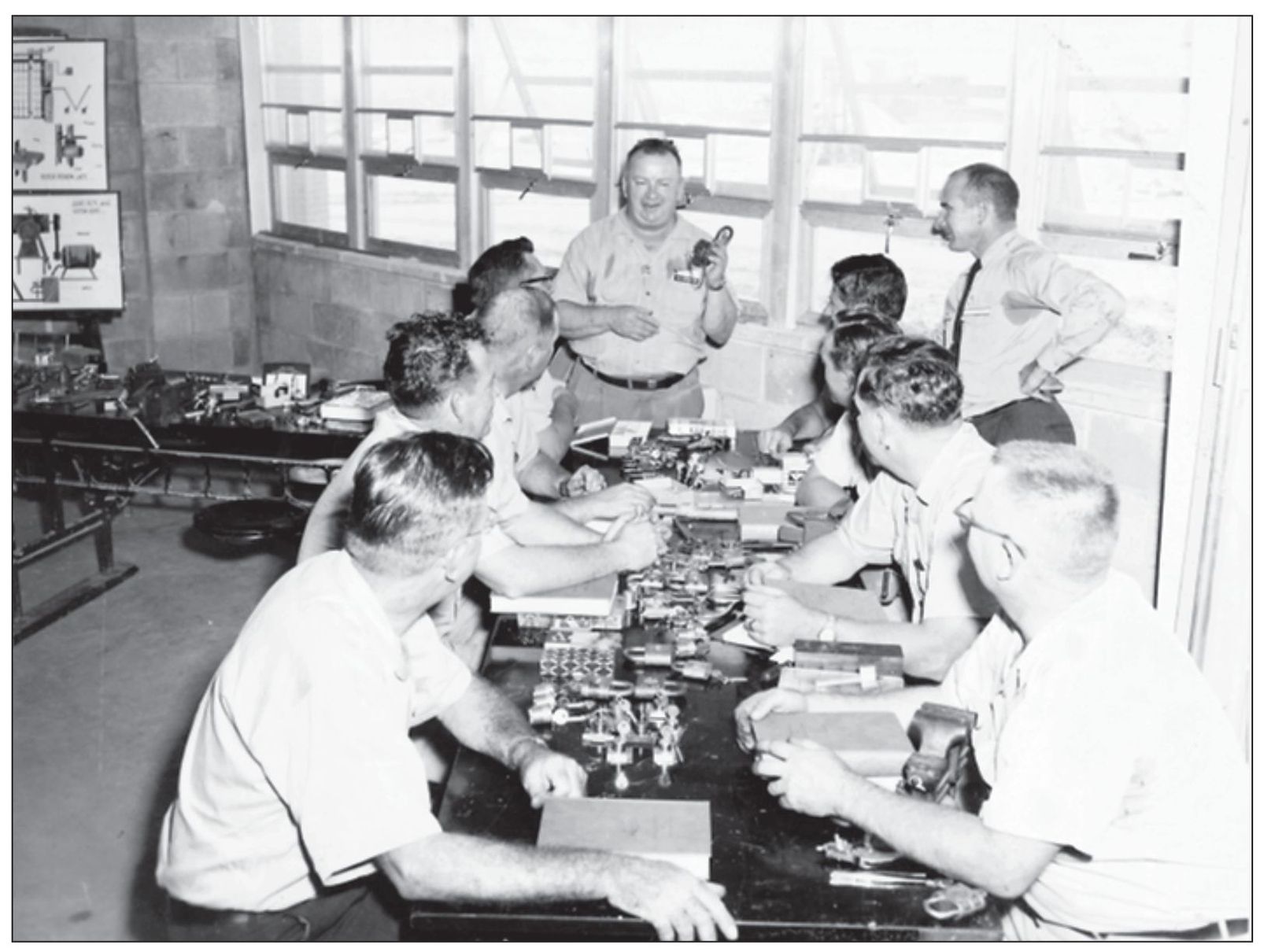
Prior to the opening of the farm dormitory in 1961, staff members from other institutions were sent to Leavenworth for formal locksmith training. As a portion of their training, these men installed all of the locks in the new facility. (Author’s collection.)
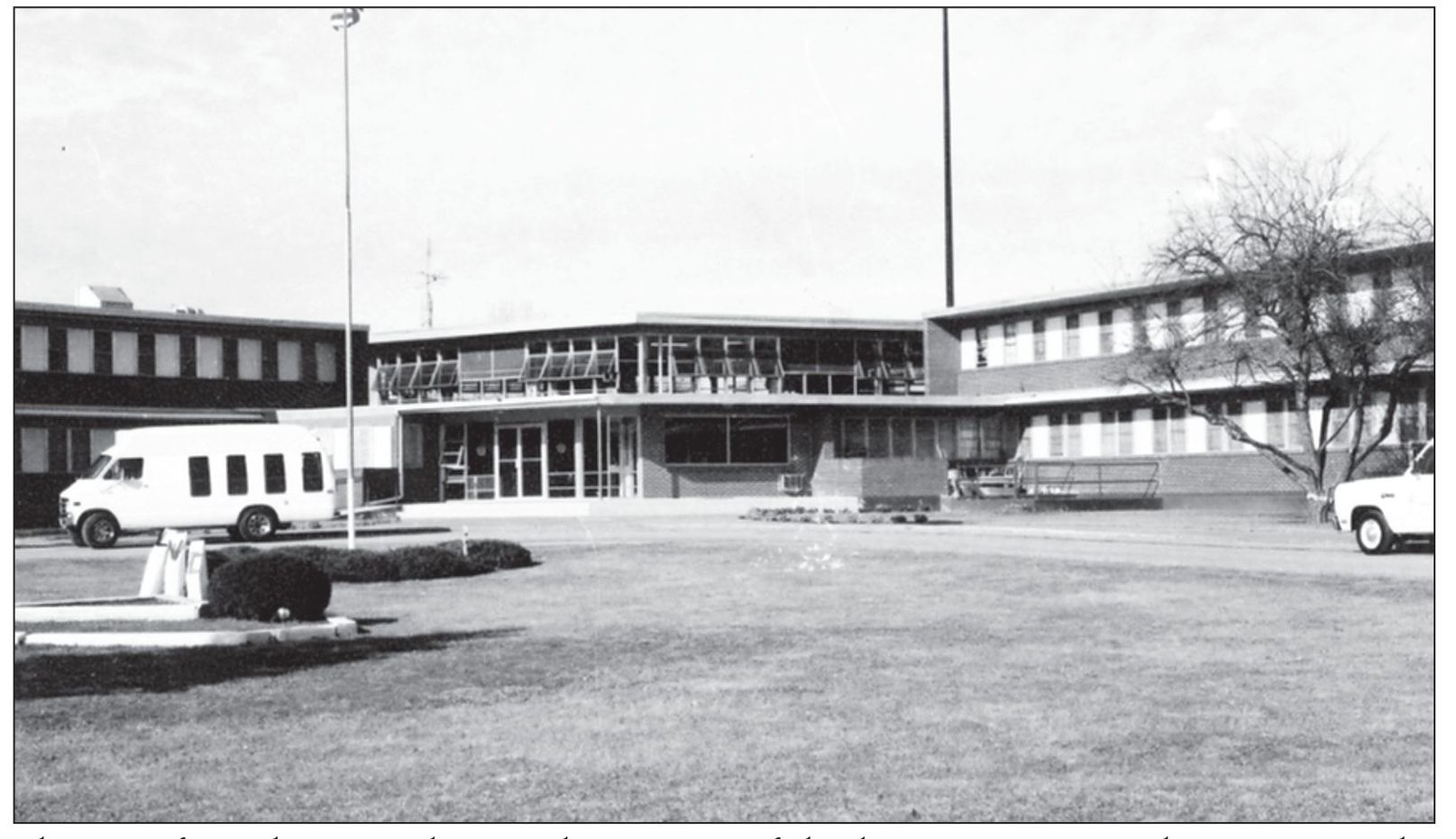
The new farm dormitory became known as a federal prison camp in the 1970s. By the mid-1980s the circle driveway was removed and a new visiting room was built with a courtyard. (Author’s collection.)
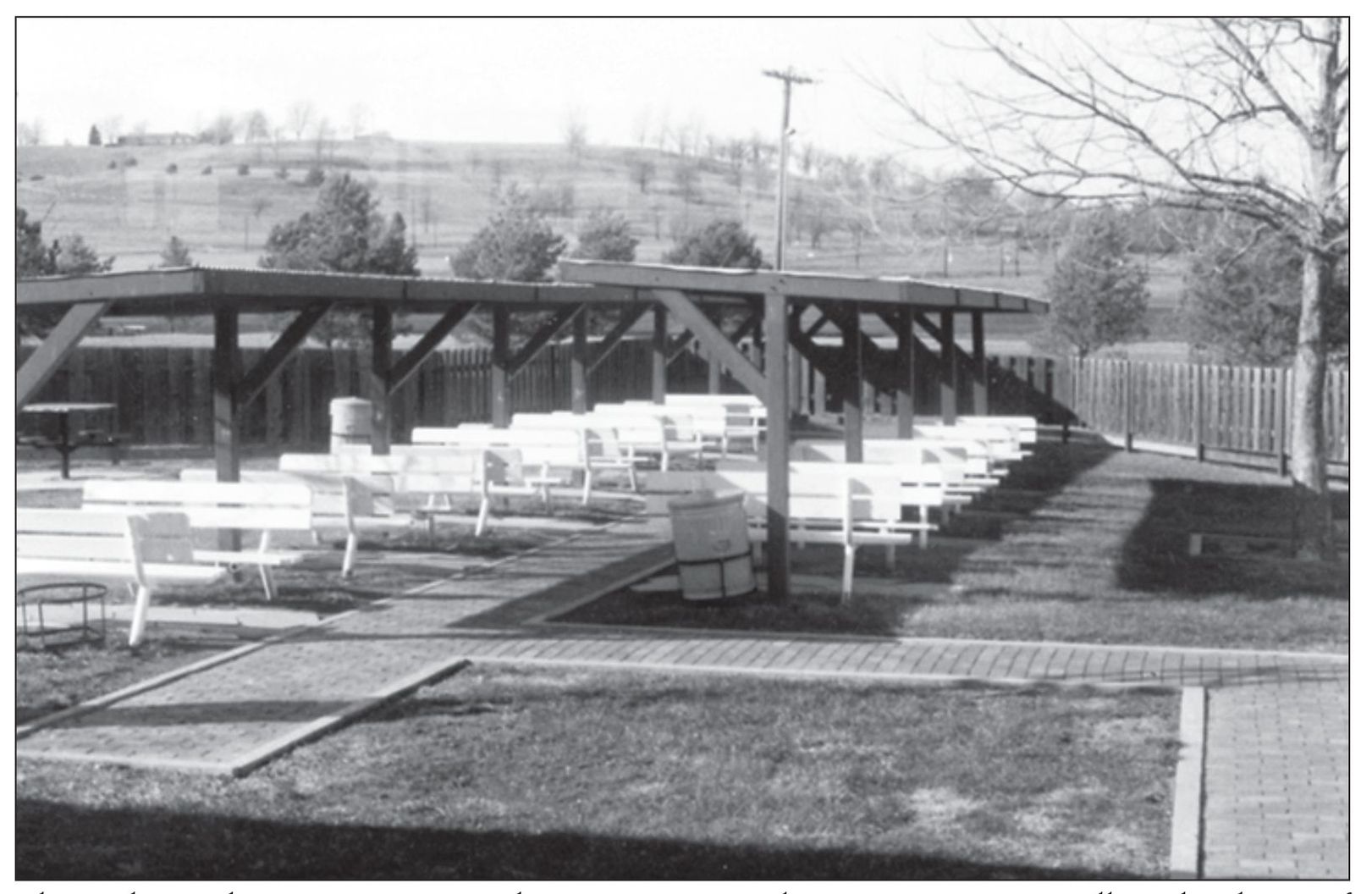
This is the outdoor visiting area at the prison camp early 1980s. Inmates are allowed 24 hours of visiting a month with approved visitors. Inmates that have families living outside the immediate area can apply for extended visiting privileges. (Author’s collection.)
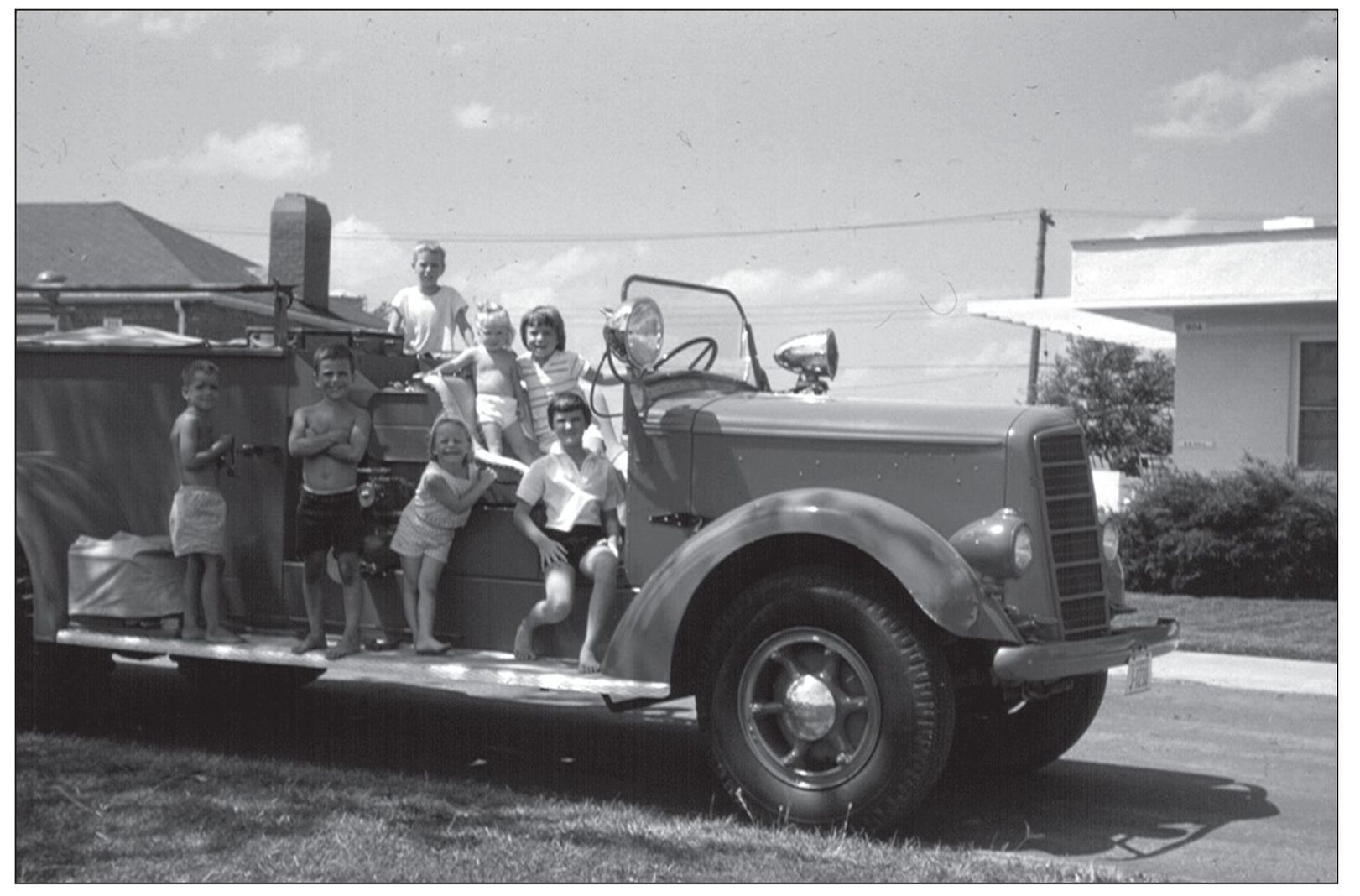
Staff members’ children are seen here aboard the institution fire truck in the 1960s. (Courtesy Jim Will.)
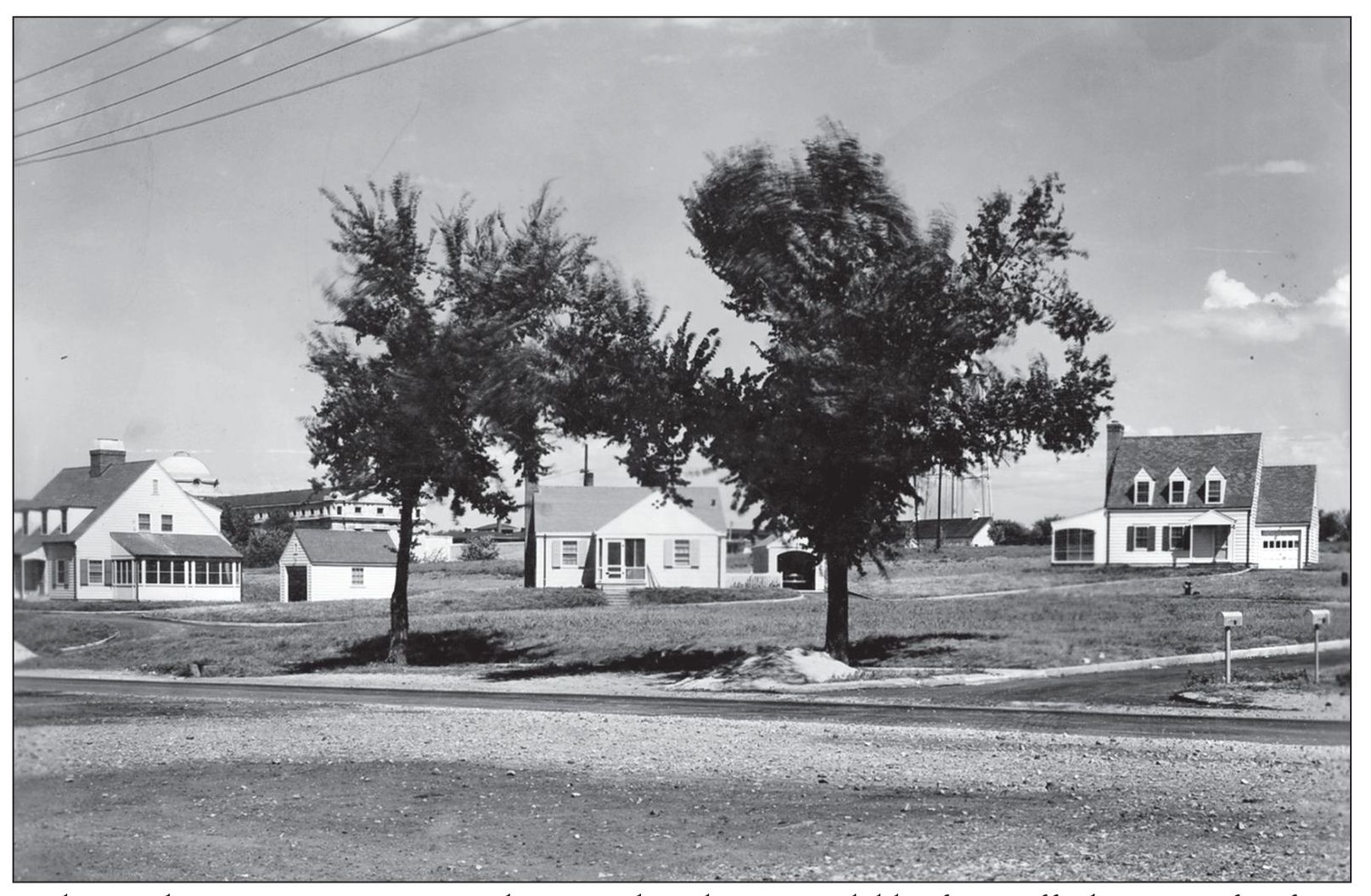
Built in the 1930s, reservation housing has been available for staff that transfer from other institutions. (Author’s collection.)
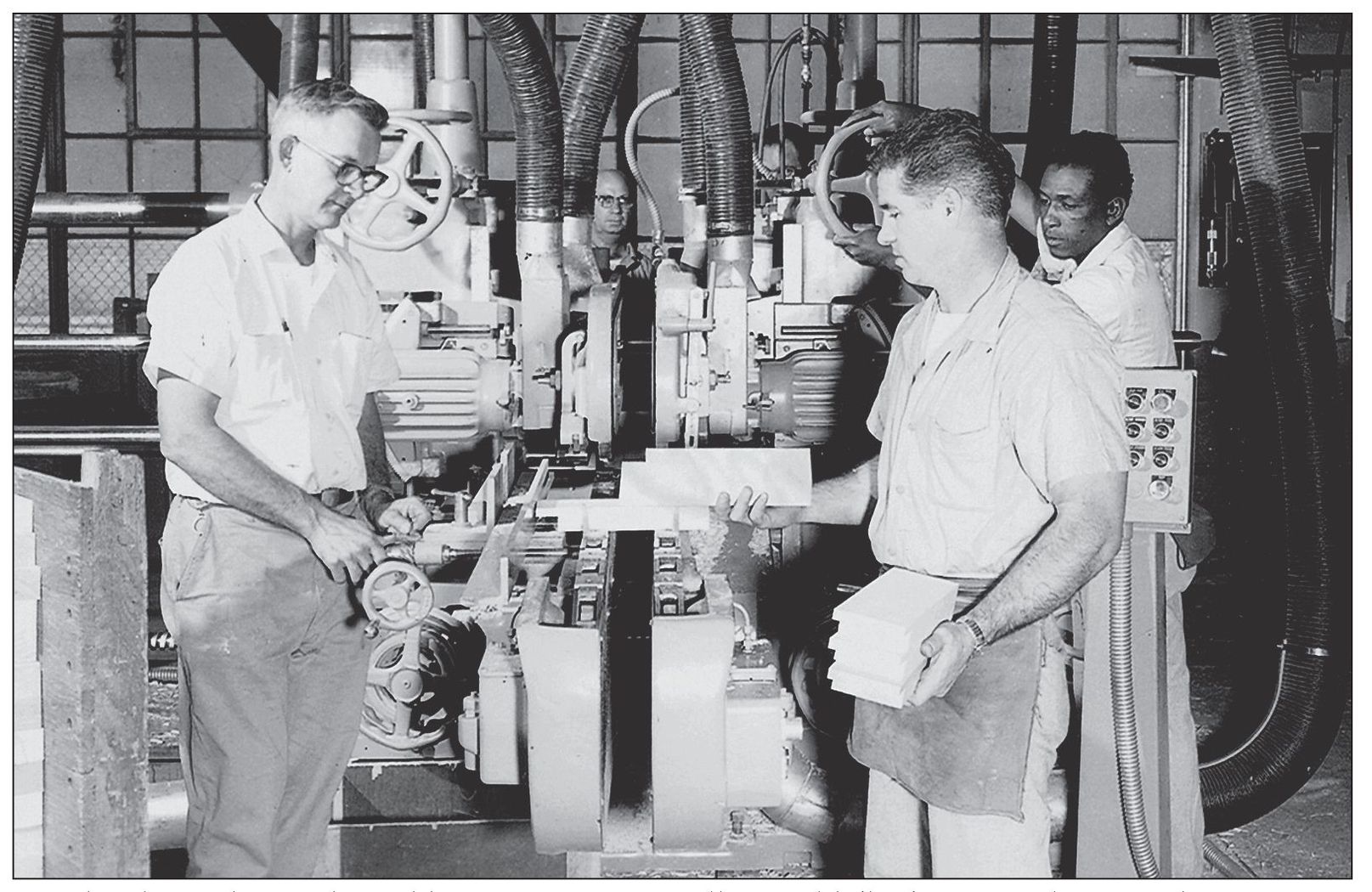
On the day of his 28th wedding anniversary, Bill Arnold (left) was working in the furniture factory when an inmate assaulted him. Arnold received injuries that resulted in the loss of his right hand. During the assault, another staff member came to his aid, and the inmate attempted to also stab him. A six-inch steel pocket ruler kept the staff member from getting hurt. (Courtesy Dorothy Arnold.)
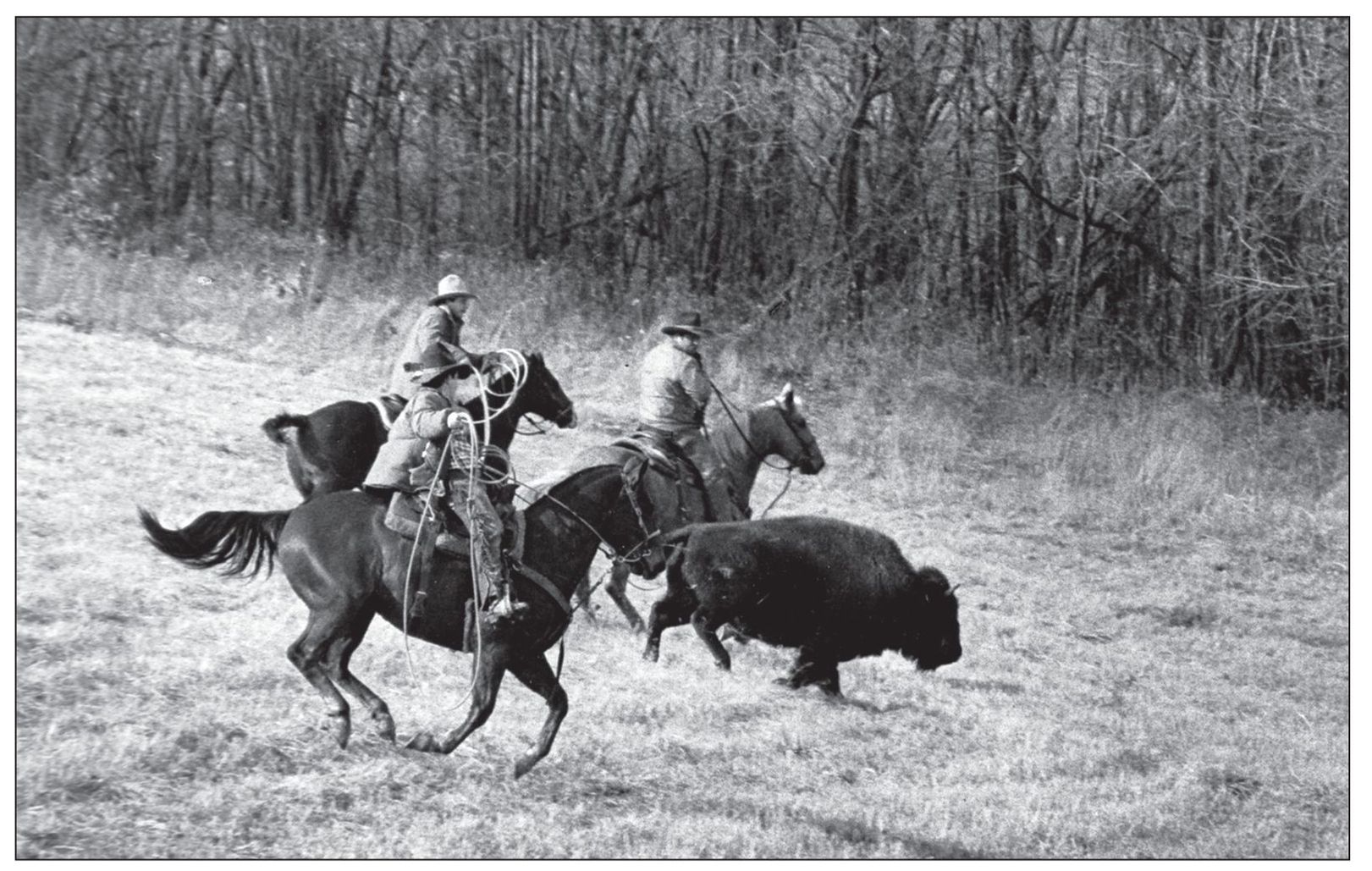
In December 1982, a buffalo was being received from the military reservation at Fort Riley. The buffalo bolted from the trailer as she was being unloaded. For the next 24 hours, staff searched for the buffalo in cars, planes, and even on horseback. Shown are three officers attempting to lasso the escapee. (Author’s collection.)
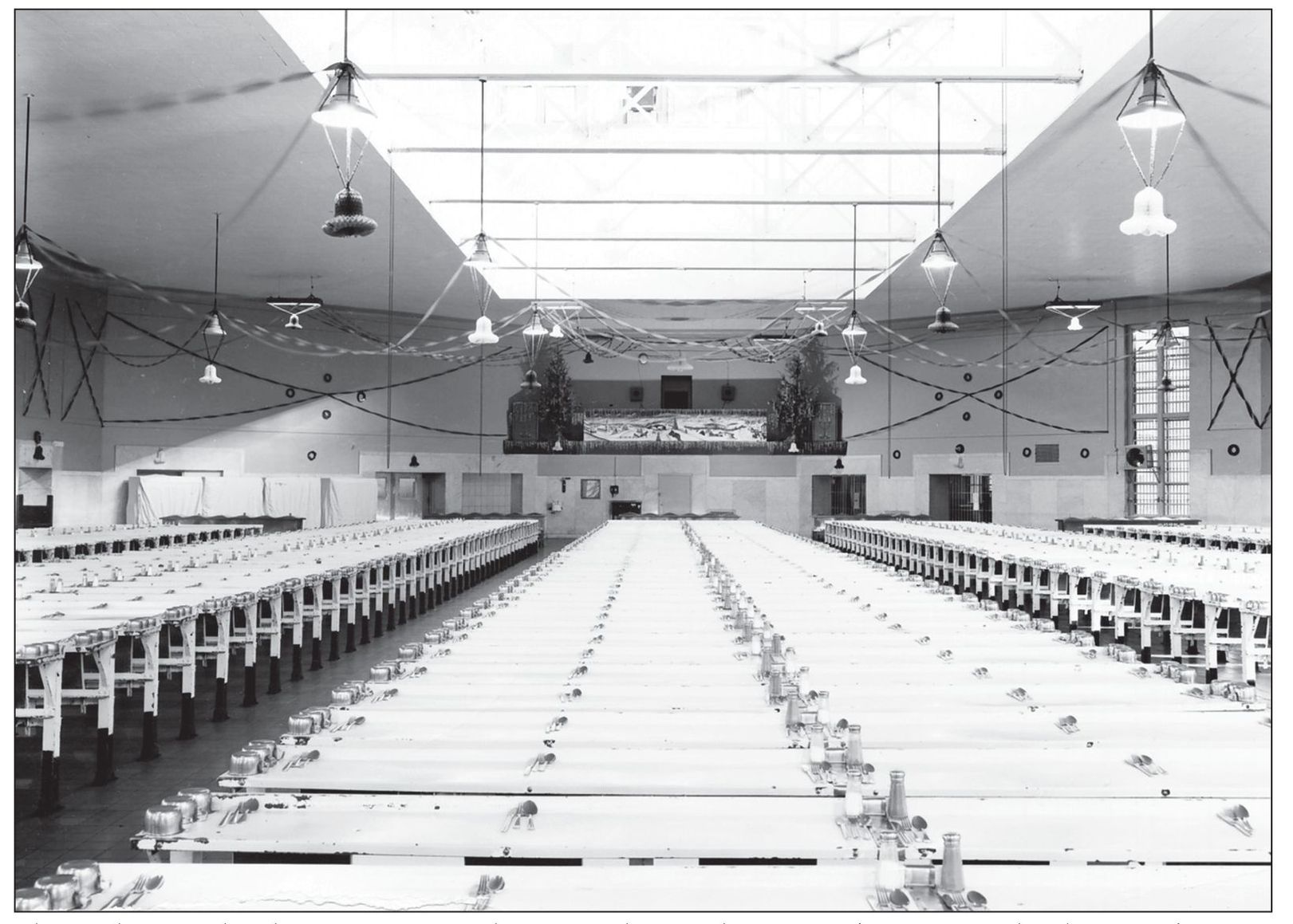
Shown here is the dining room at Christmas during the 1950s. (Courtesy Chuck Zarter.)
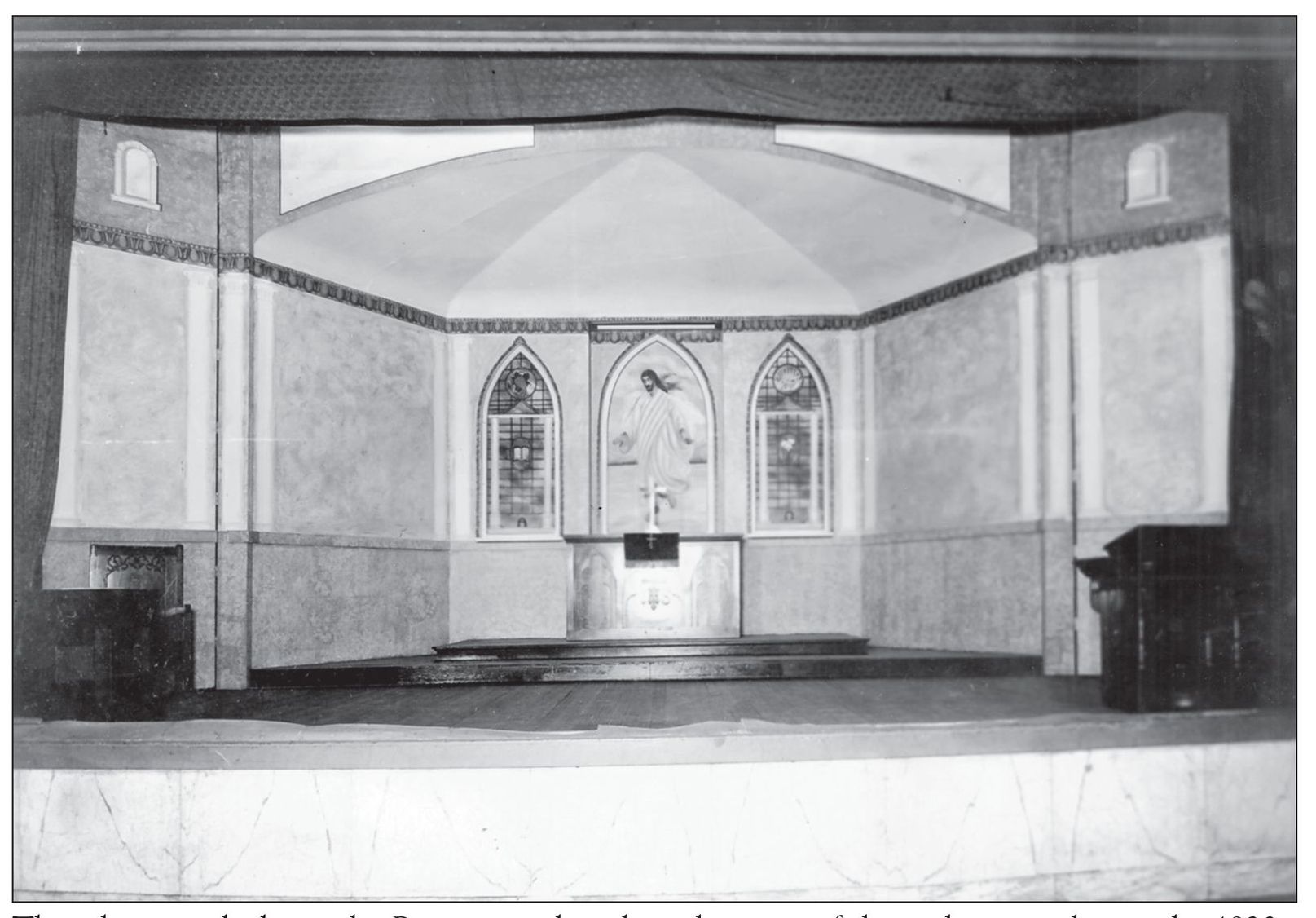
This photograph shows the Protestant chapel on the stage of the auditorium during the 1930s. (Author’s collection.)
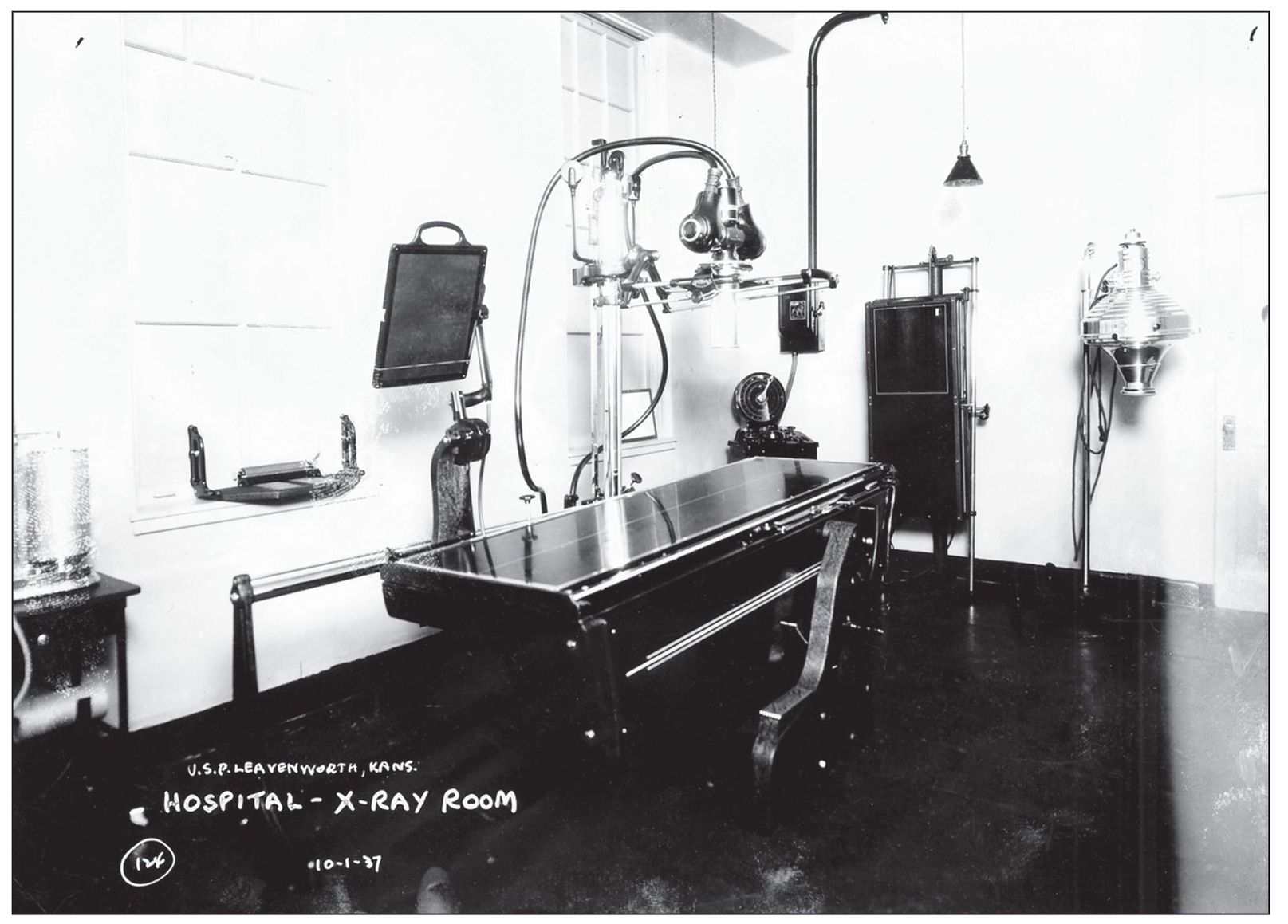
The institution’s first x-ray machine was installed during the 1930s. (Author’s collection.)
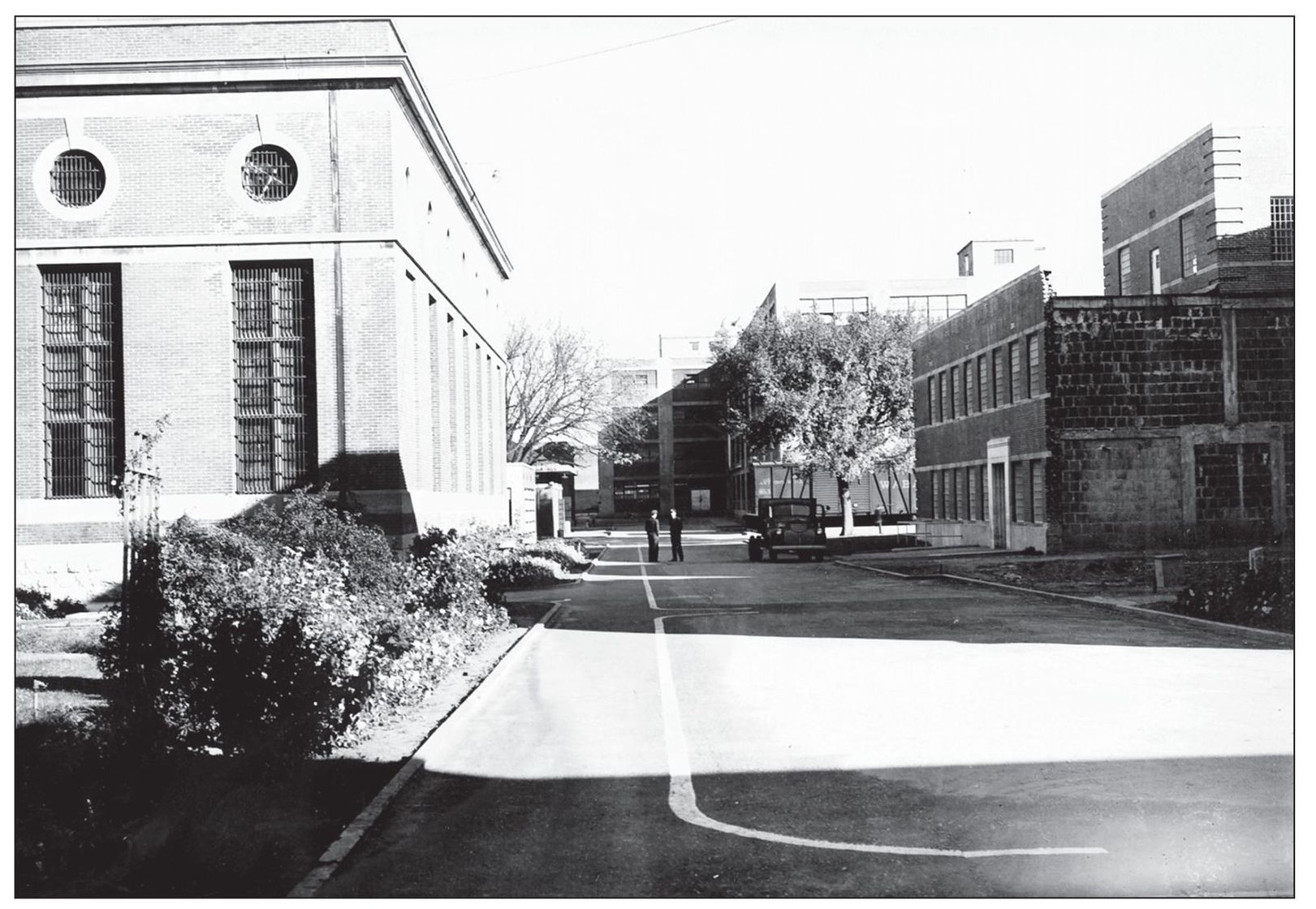
A typical street view from B cell house shows the new institution hospital being built in the early 1930s. (Author’s collection.)
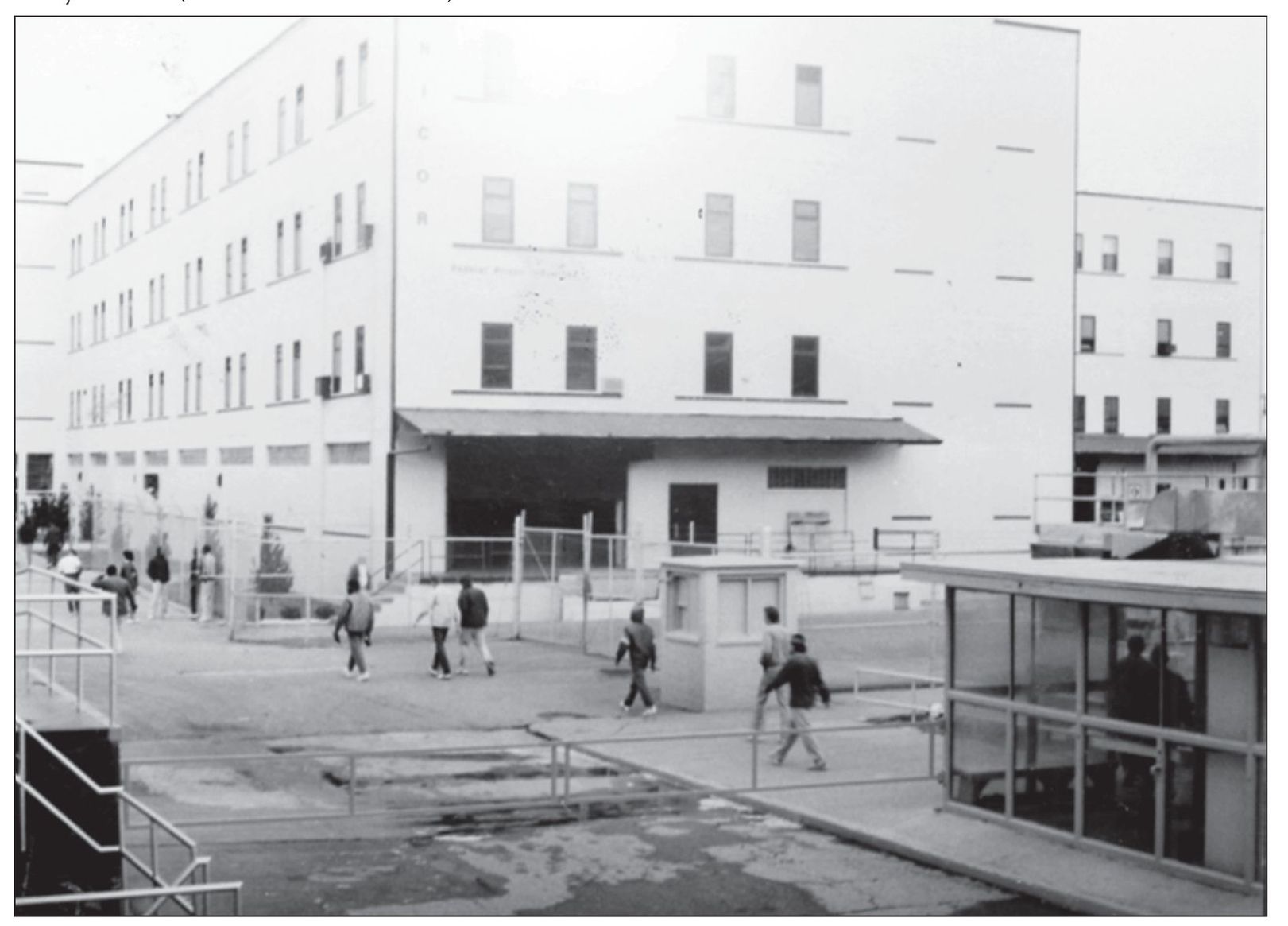
Inmates head for work in the factory during the 1980s. (Author’s collection.)
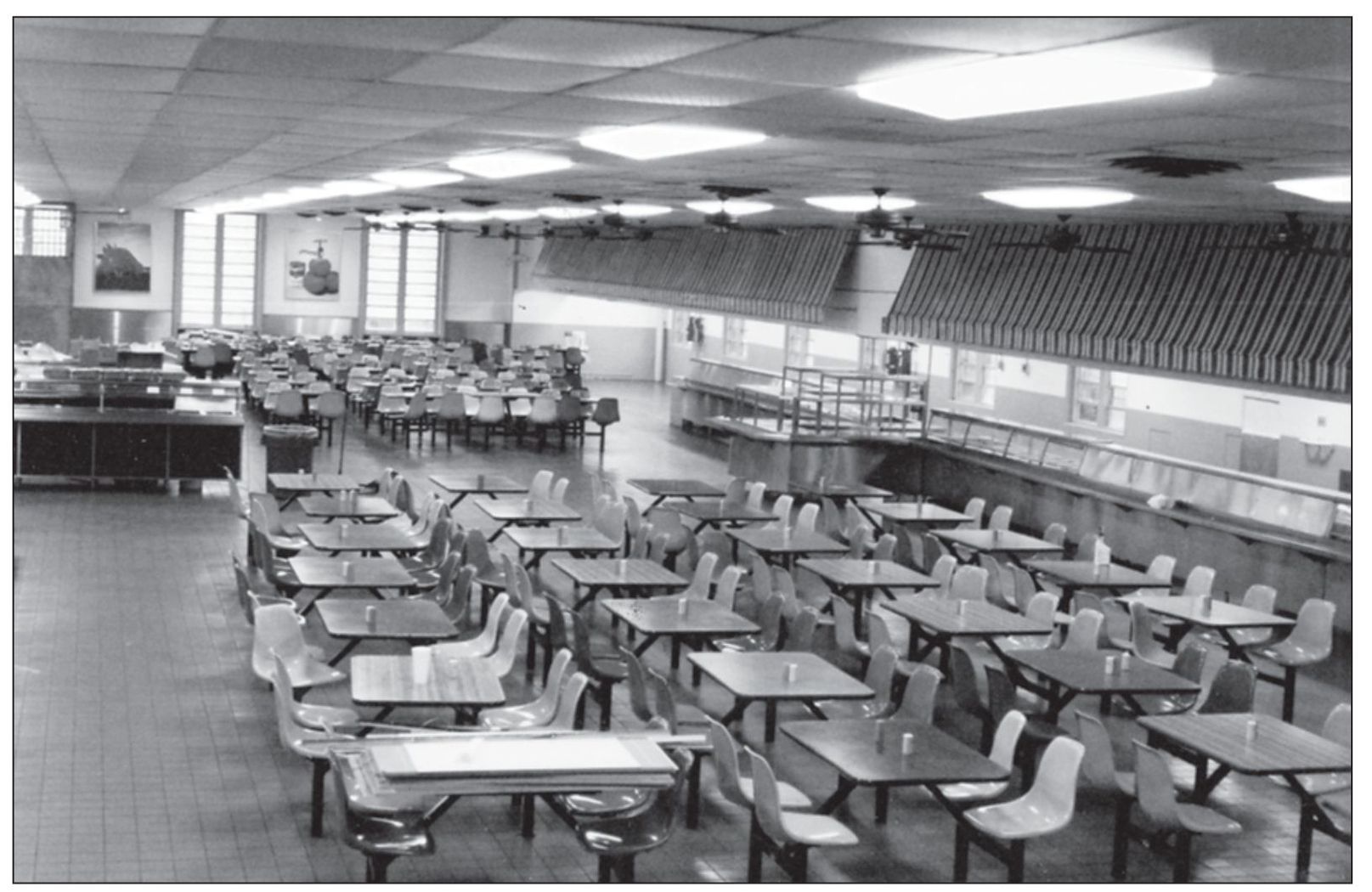
This photograph shows the inmate dining room in the 1990s. Gone are the days when inmates sat in total silence and all in one direction. (Author’s collection.)

Here is a view of the upper rotunda during the 1990s. (Author’s collection.)
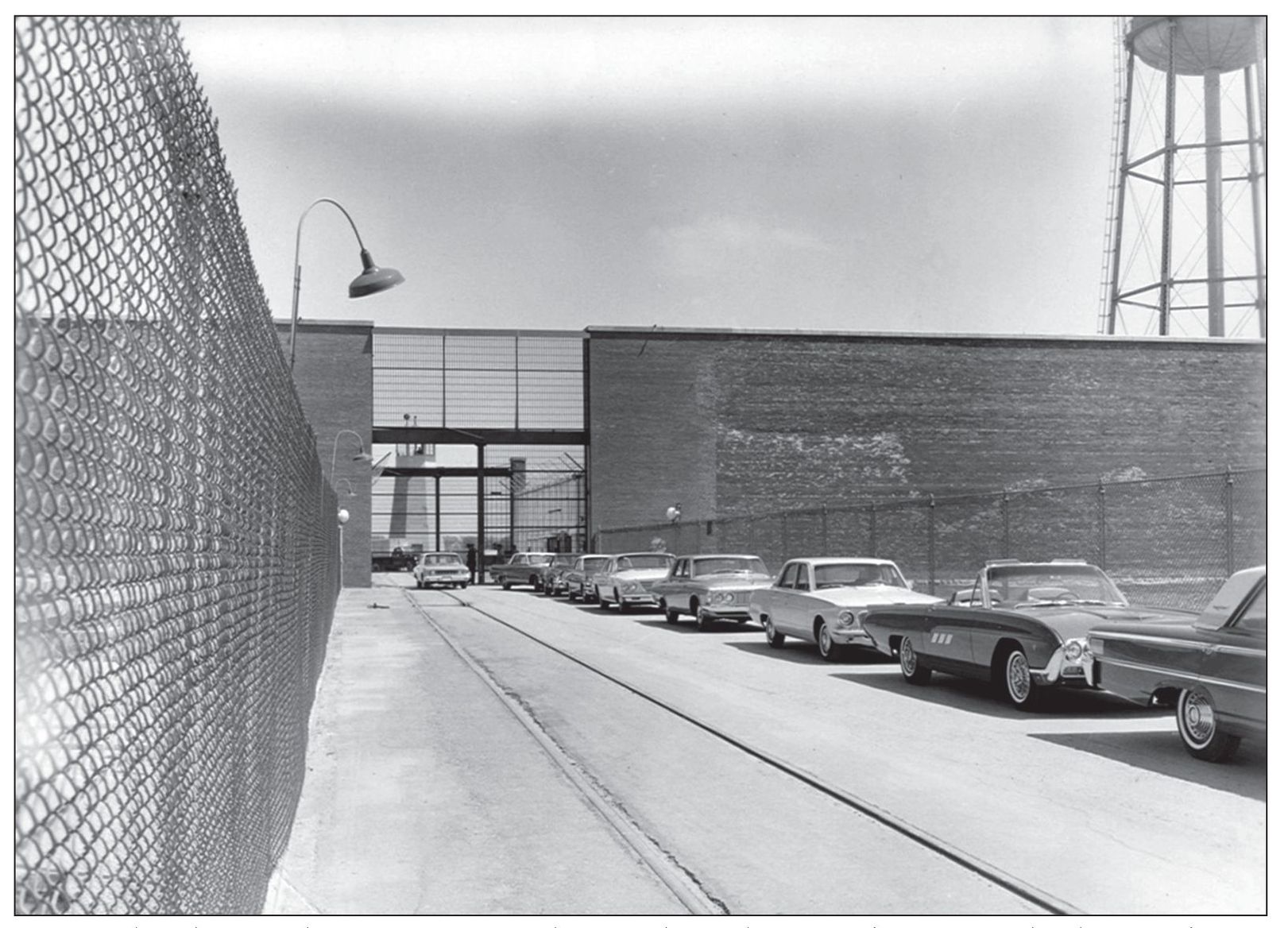
Cars are lined up for the institution car show in the early 1960s. (Courtesy Chuck Zarter.)
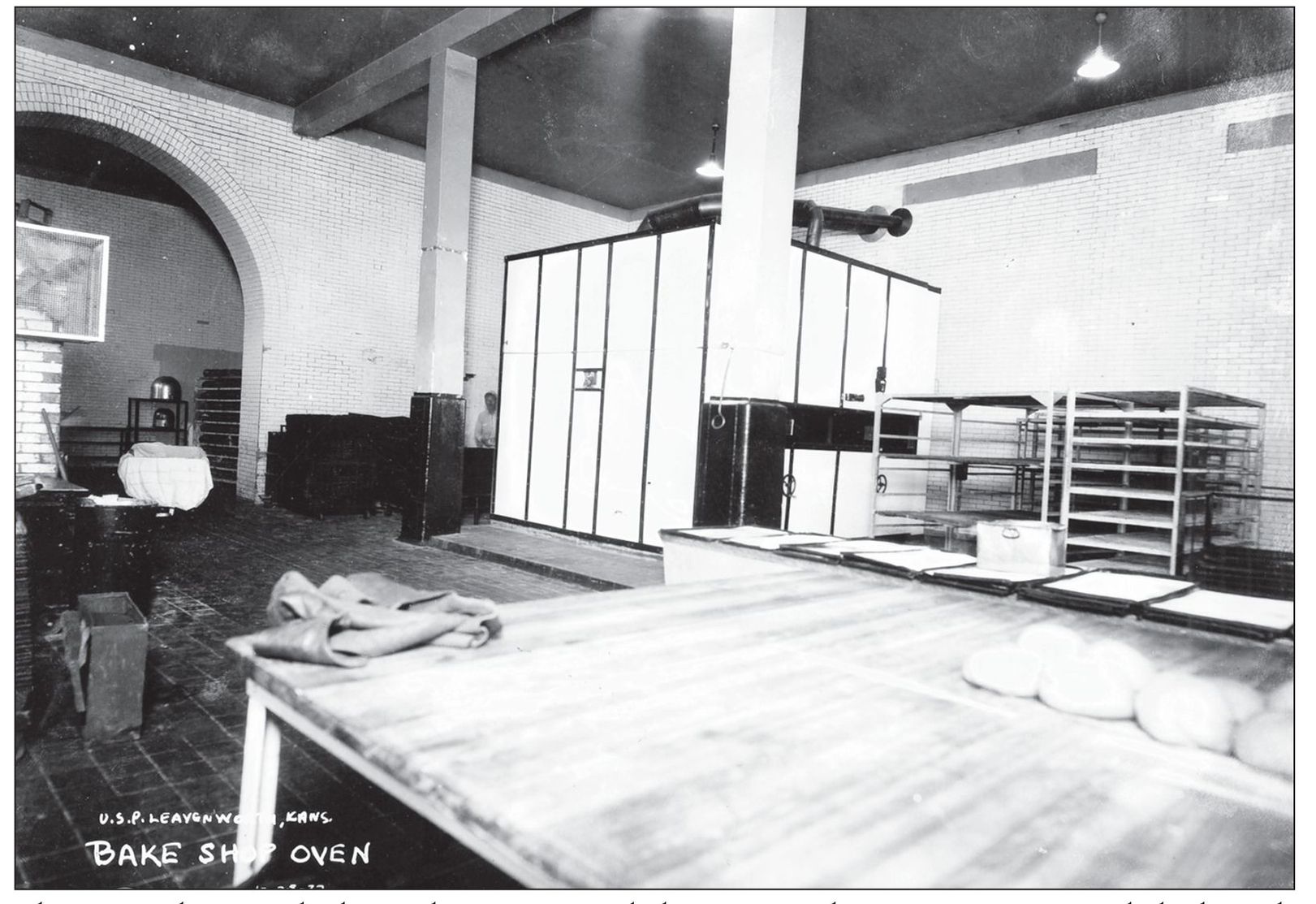
This 1937 photograph shows the institution bakery. From this oven came many baked goods such as bread, dinner rolls, pies, and cakes. (Author’s collection.)
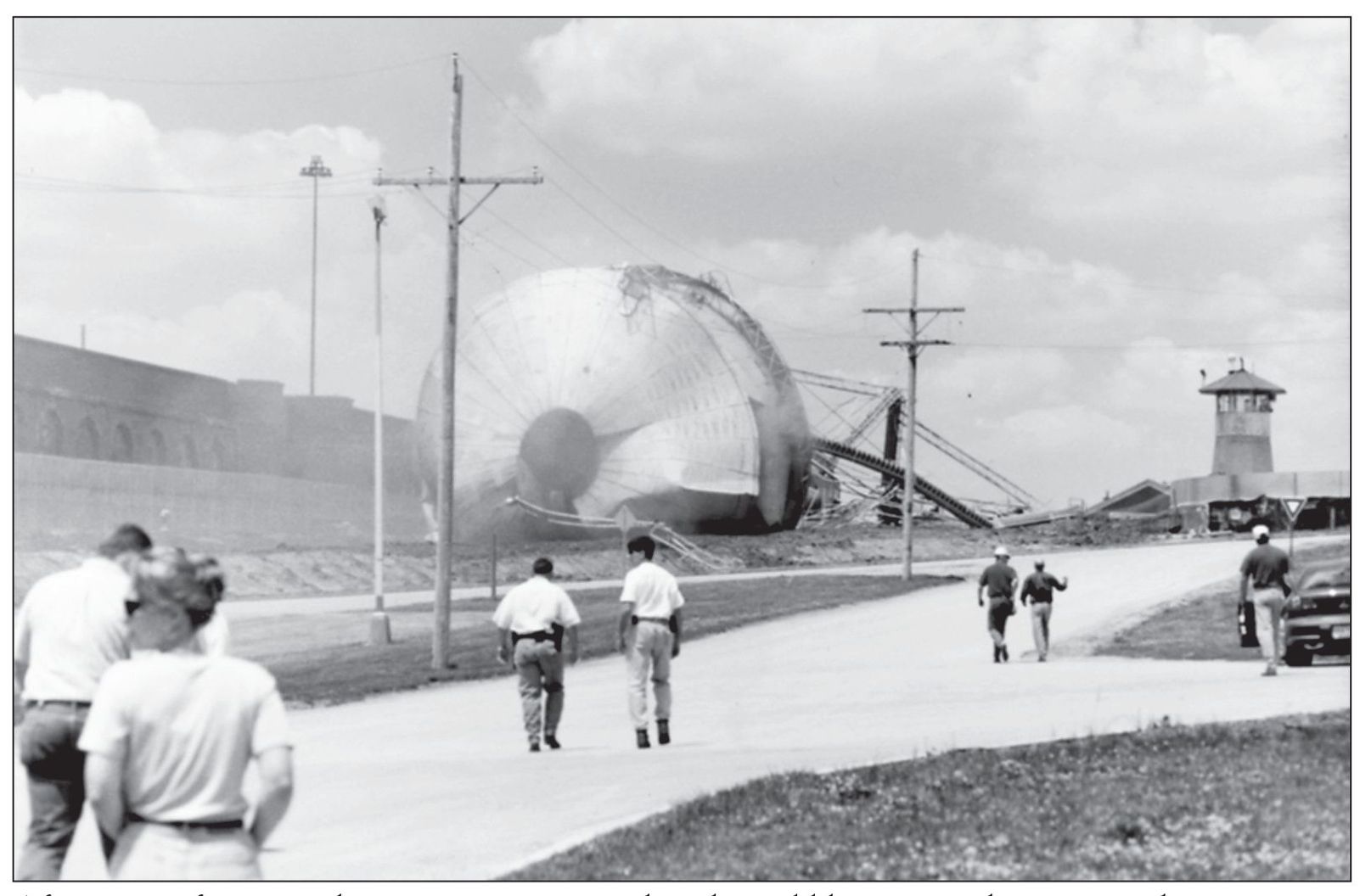
After years of service, the water tower was reduced to rubble in seconds. By 1997, the institution water towers had “holes you could drive a car thru!” (Author’s collection.)
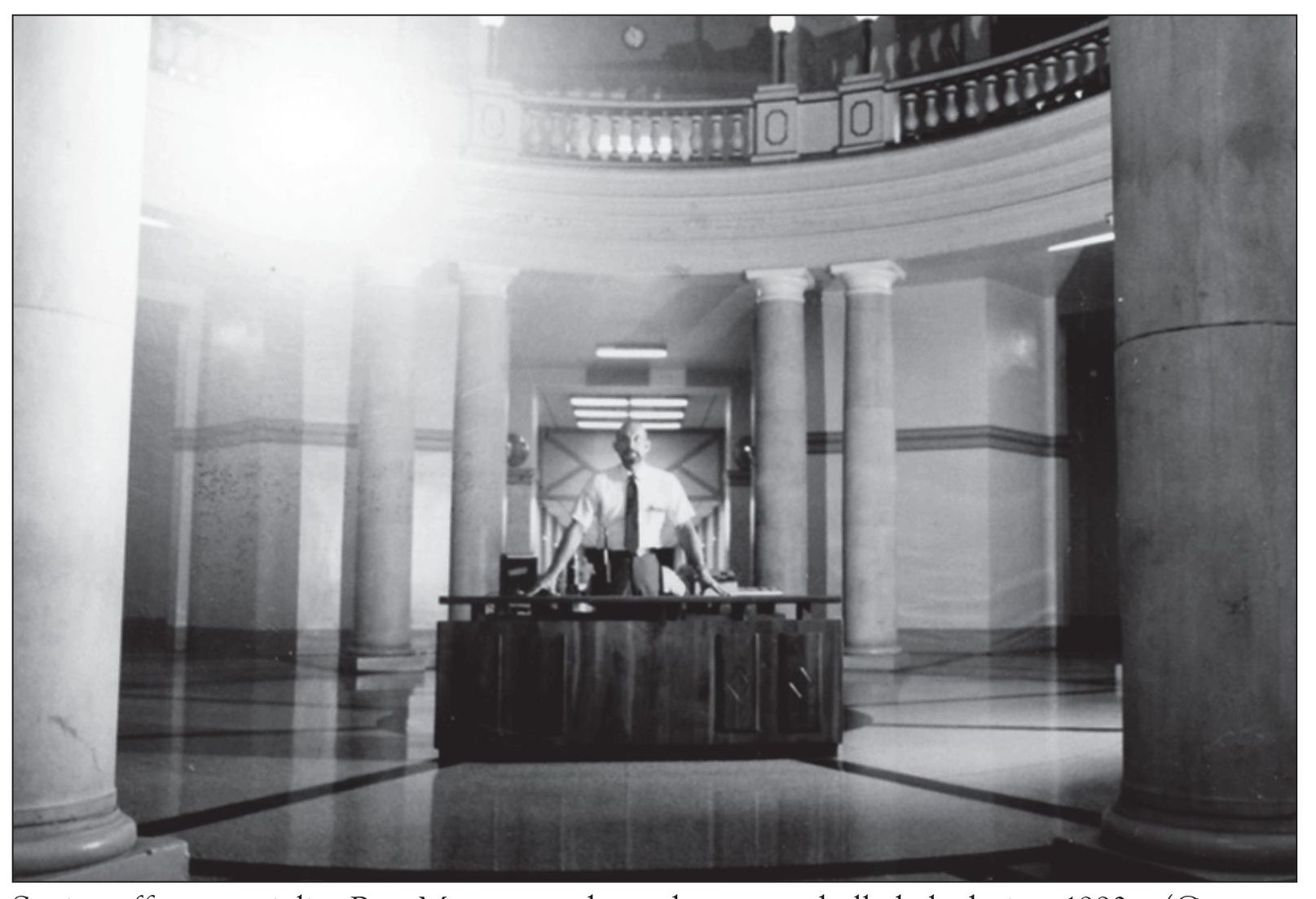
Senior officer specialist Roy Moore stands at the center hall desk during 1990s. (Courtesy Roy Moore.)
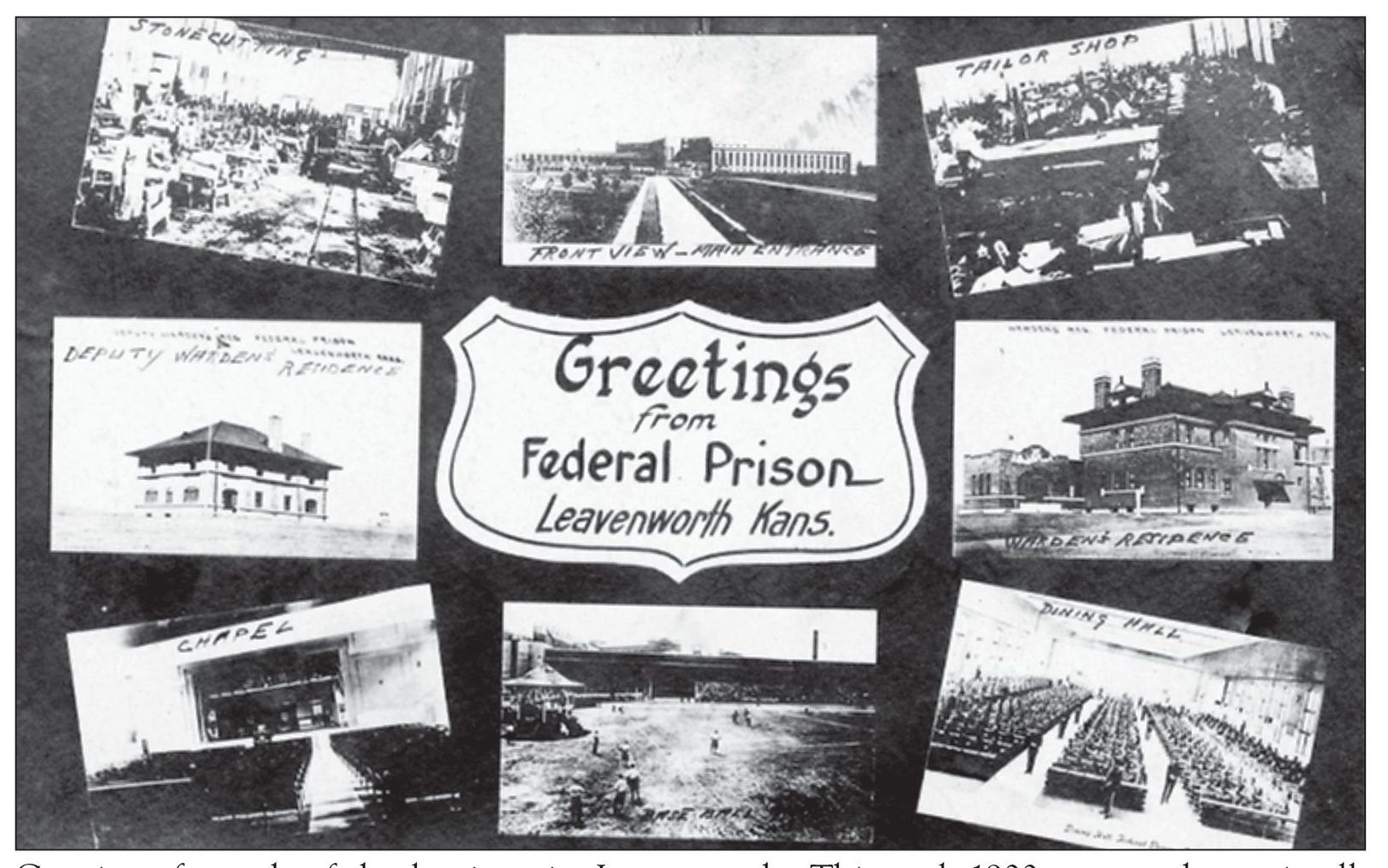
Greetings from the federal prison in Leavenworth. This early-1900s postcard says it all. (Author’s collection.)
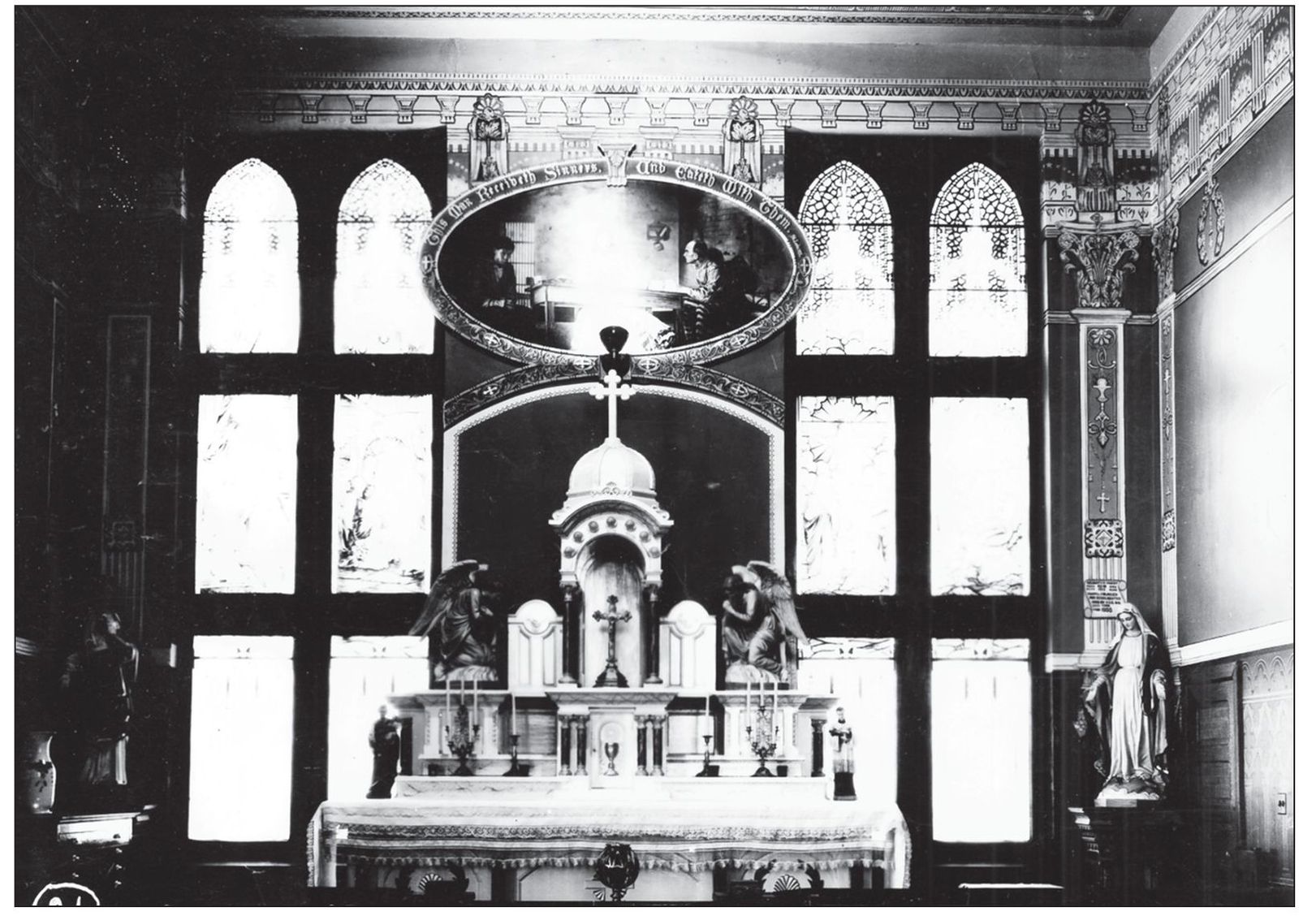
Here is the Catholic chapel in the 1930s. Shortly after this photograph was taken, the chapel was destroyed by fire. Painted and decorated in 1913 under the direction of a Benedictine priest, the stained-glass windows remained intact until they were destroyed during an institution riot on July 5, 1992. (Author’s collection.)
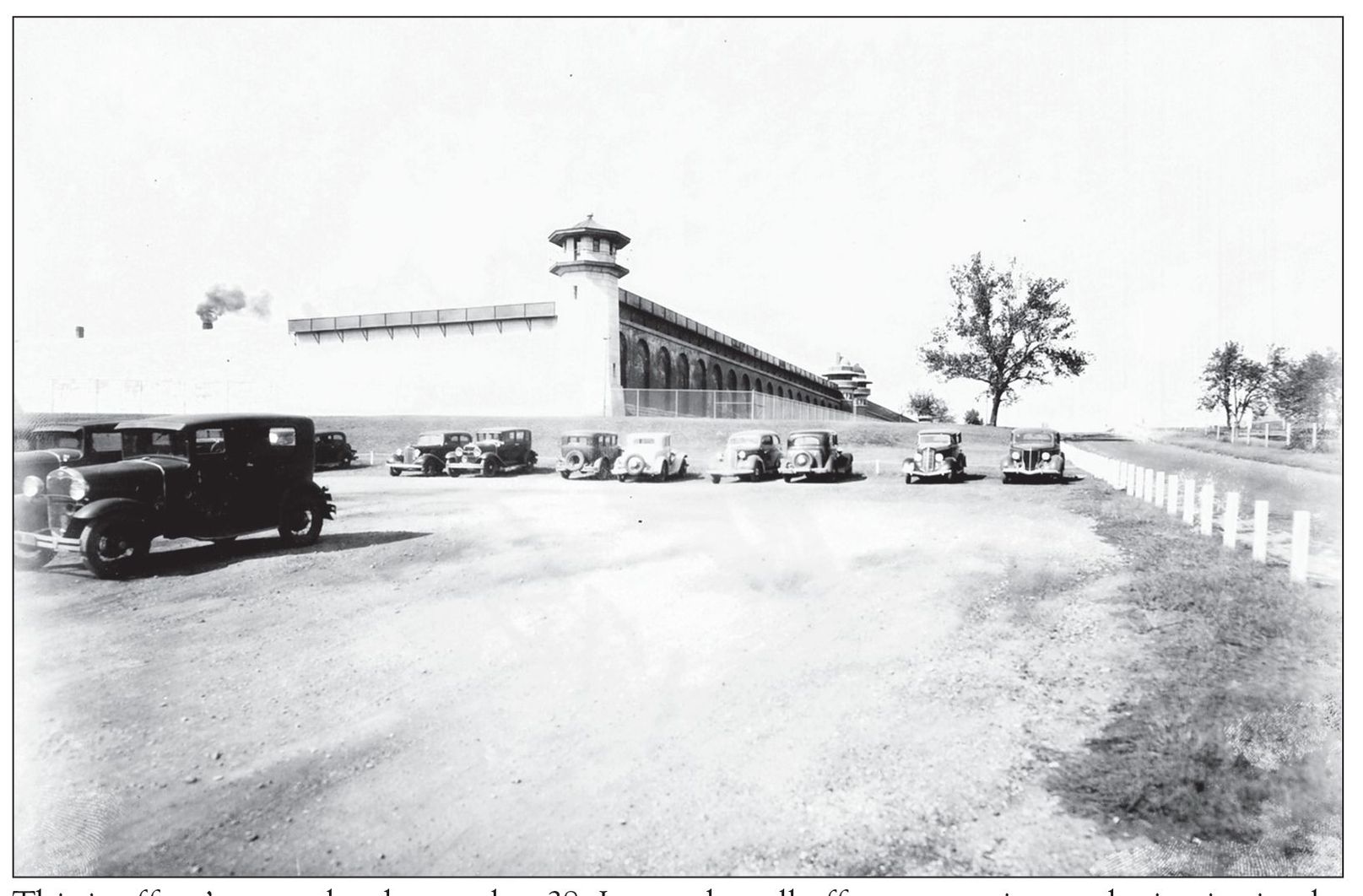
This is officer’s general order number 38. It says that all officers reporting to the institution by motorcar must park in the southeast parking lot, and all those riding horses, mules, or wagons must park in the field east of the institution. (Author’s collection.)
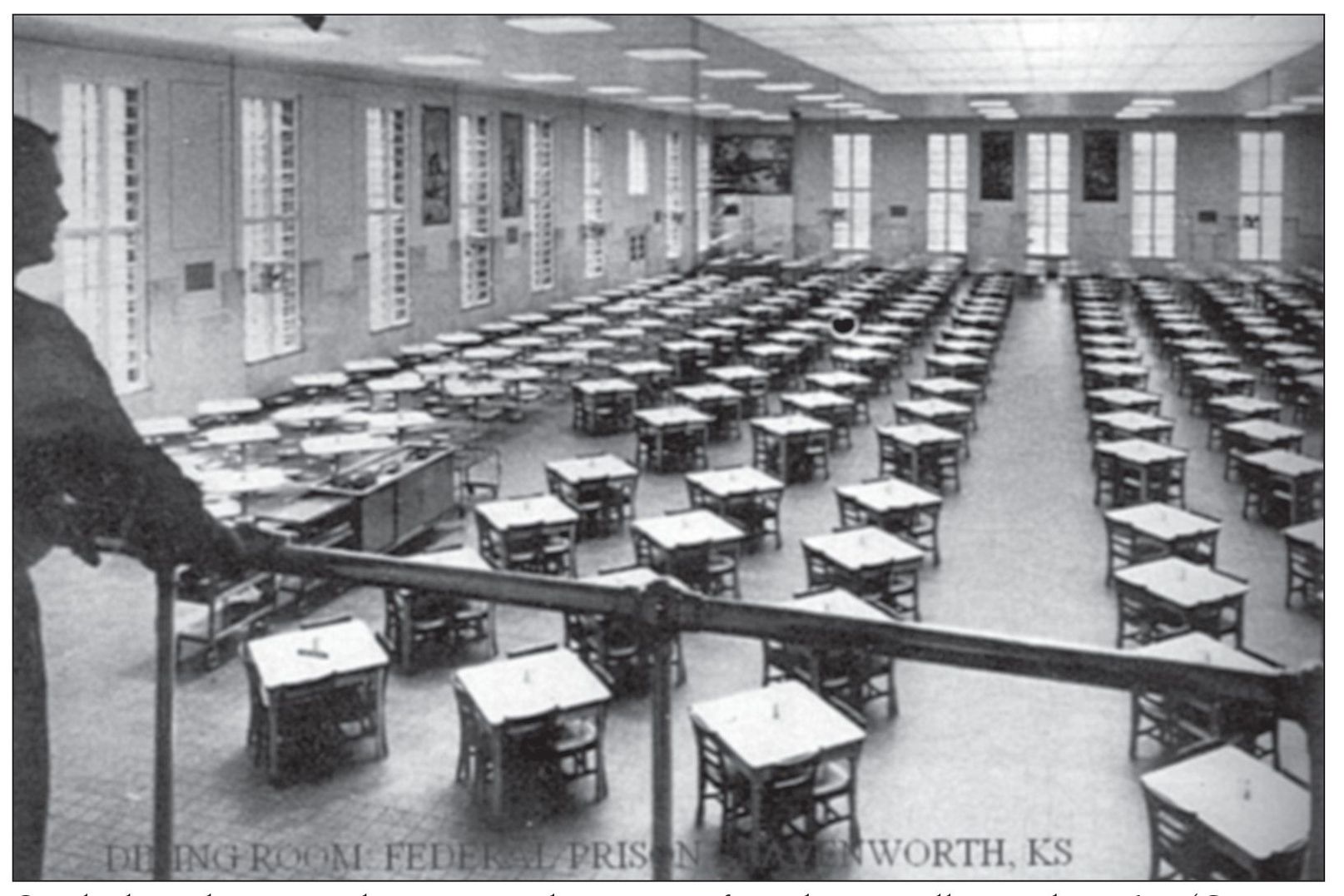
Overlooking the inmate dining room, this is a view from the gun gallery in the 1960s. (Courtesy Chuck Zarter.)
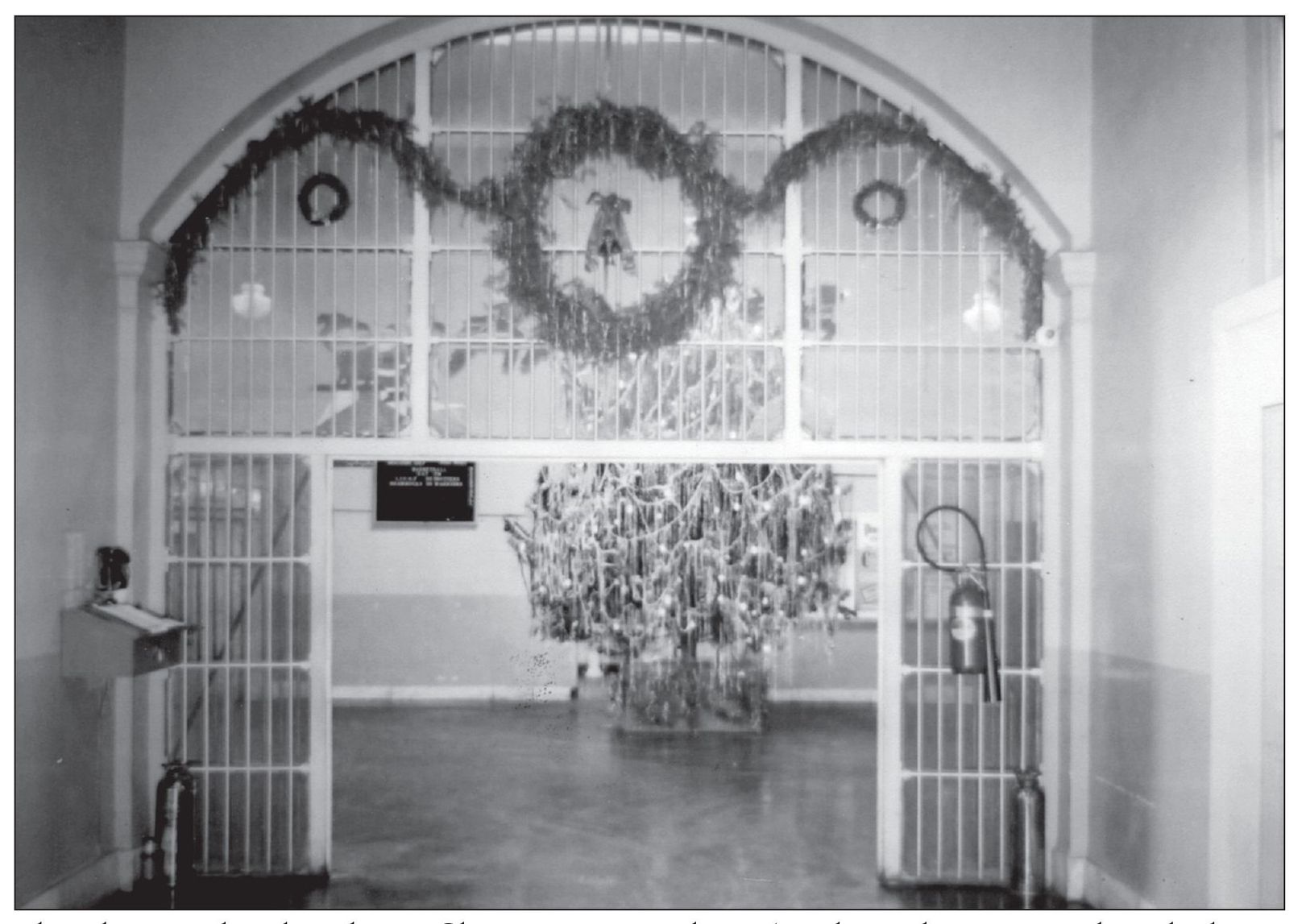
This photograph, taken during Christmastime in the 1950s, shows the rear corridor, which was the busiest intersection inside Leavenworth. (Courtesy Jim Will.)
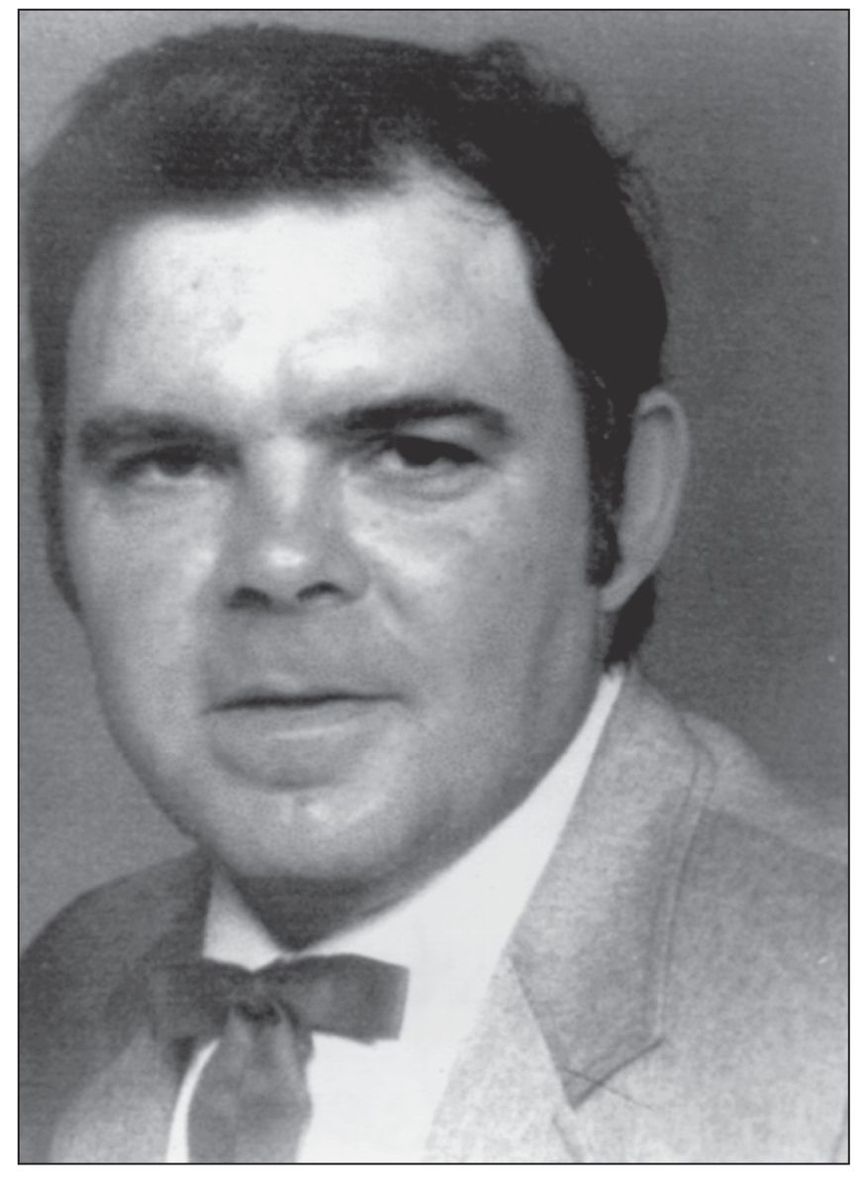
On November 3, 1983, the renovation of B cell house was well underway. A decision had been made to cut bars from a window to aid workers with the removal of debris and the remodeling process. As a staff welder was cutting the bars, Joseph J. Haas, an institution construction supervisor, was working on a scaffolding below. Suddenly the welder fell from the window and Haas attempted to break the staff member’s fall. Haas was pulled from the scaffolding and would succumb to his injuries on November 8, 1983. Haas was married and had three children. (Courtesy the Haas family.)
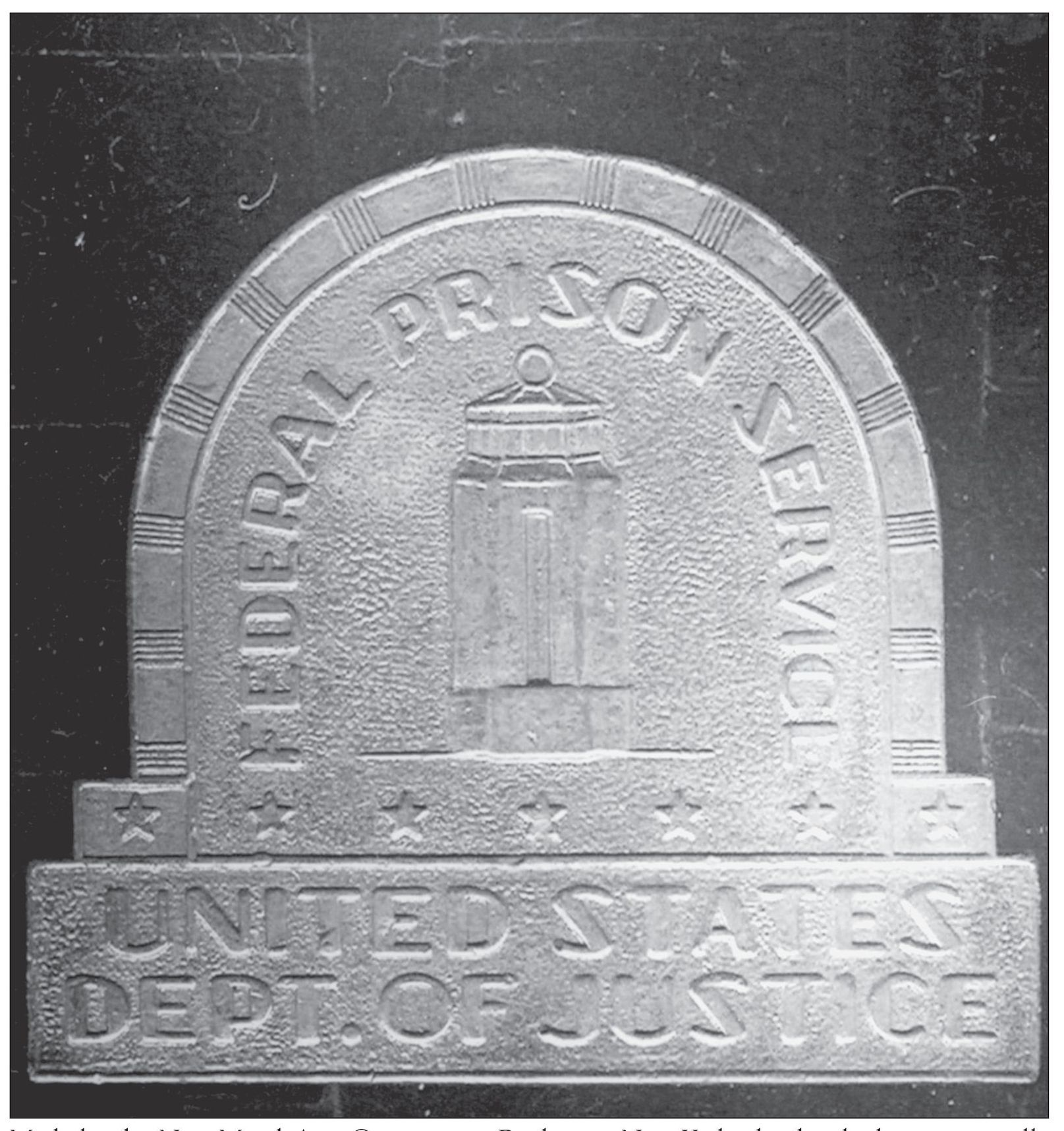
Made by the New Metal Arts Company in Rochester, New York, this hat badge was actually called a hat ornament. It is one of the most sought-after pieces of bureau of prisons memorabilia. Officers wore silver badges and supervisors wore gold or bronze ones. (Author’s collection.)
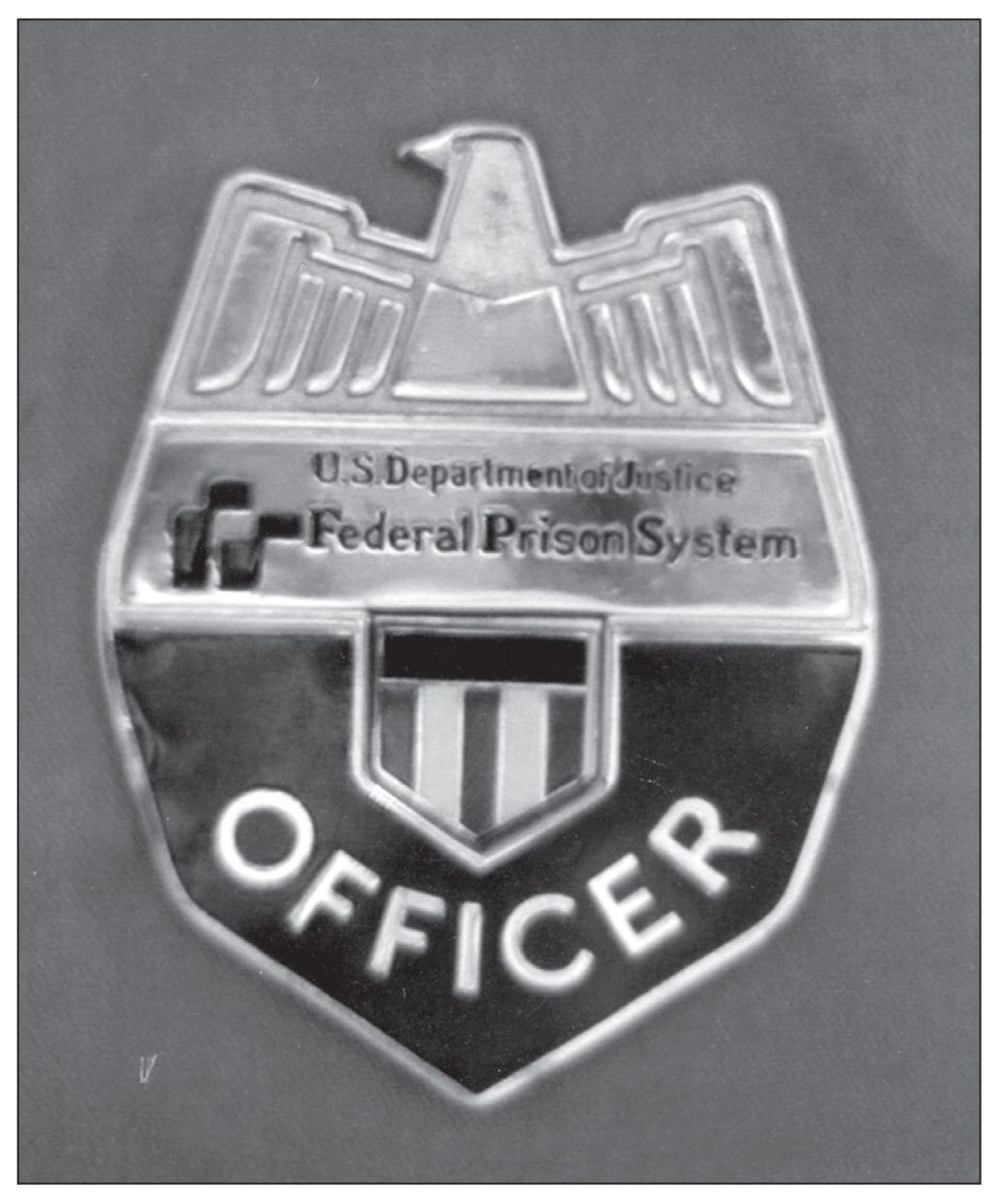
This wallet badge was used on inmate transports and escorts during the 1970s. Many staff members did not like this badge and refused to carry it. (Author’s collection.)
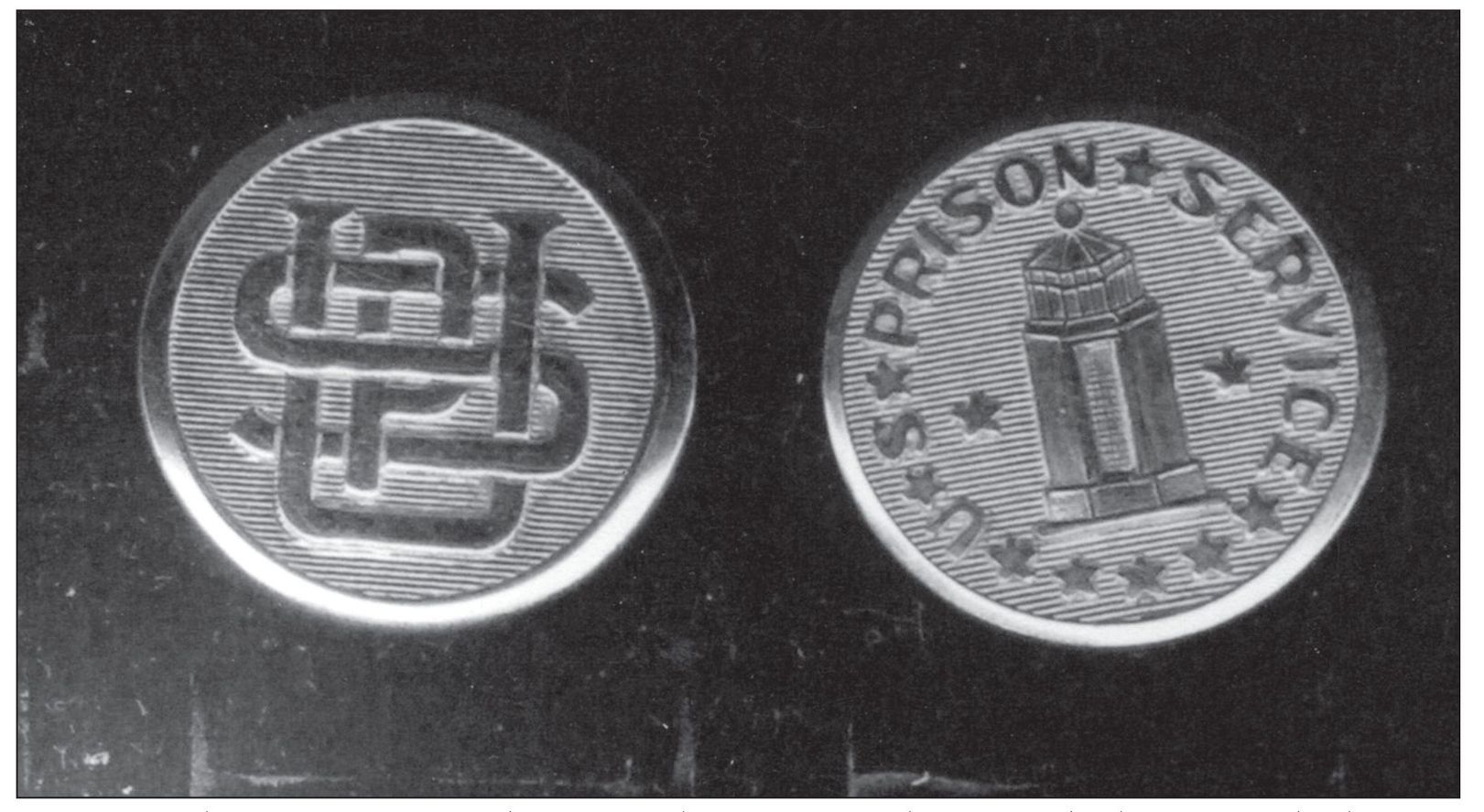
Correctional officers wore two different styles of uniform buttons. The button on the left was worn on coats from 1897 until 1920. The button on the right was worn from the 1920s through the 1940s. Legend claims that when military units, police departments, and fire departments interlocked the symbols of their departments or units, it meant unity, strength, and perseverance. (Author’s collection.)

Here is an aerial view of the institution in the 1980s. (Author’s collection.)